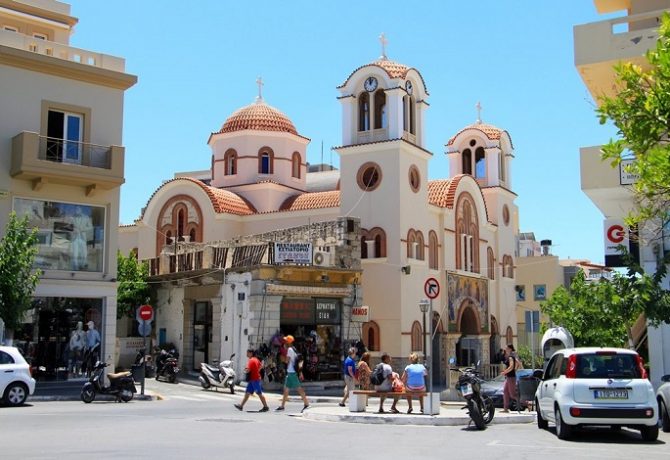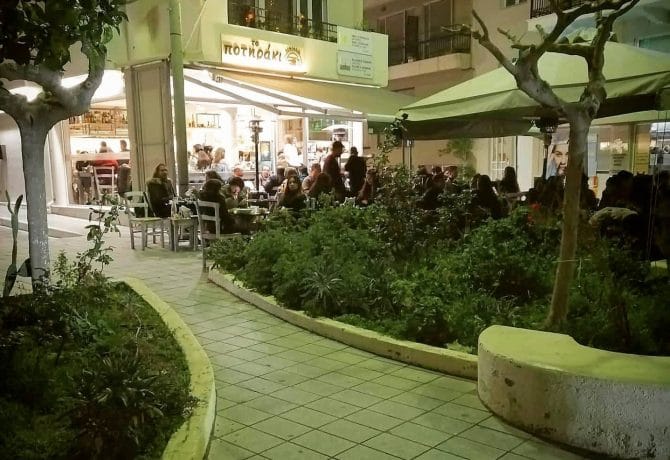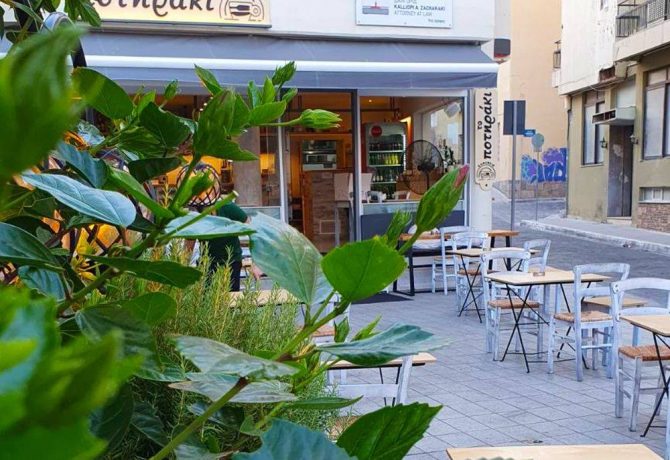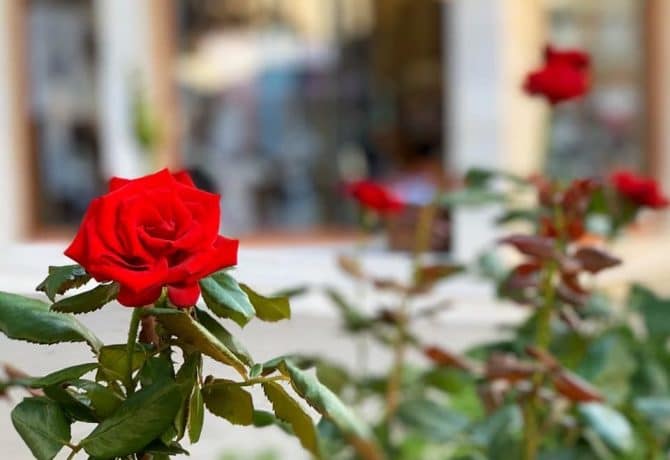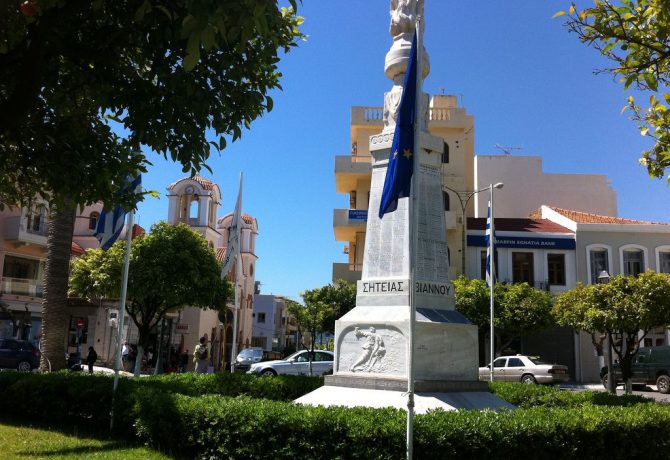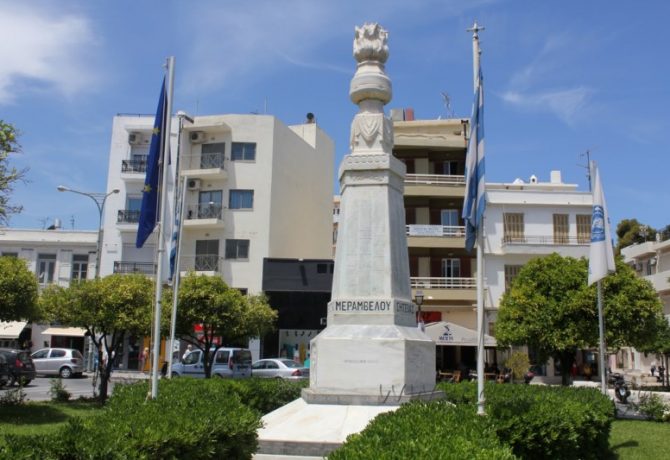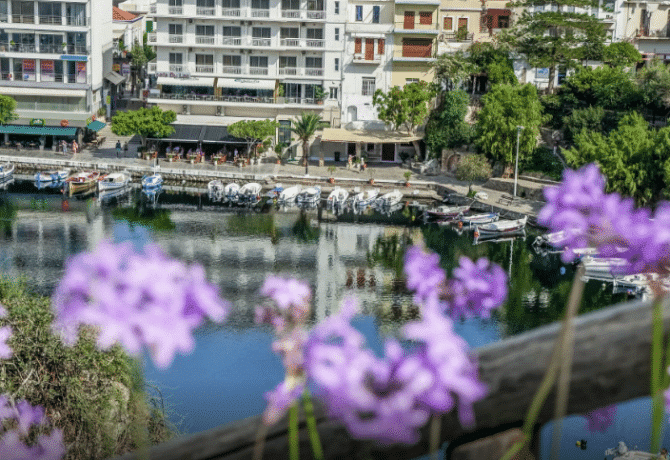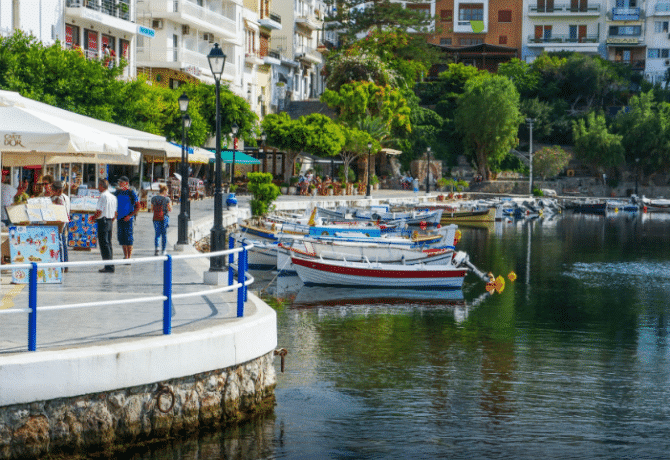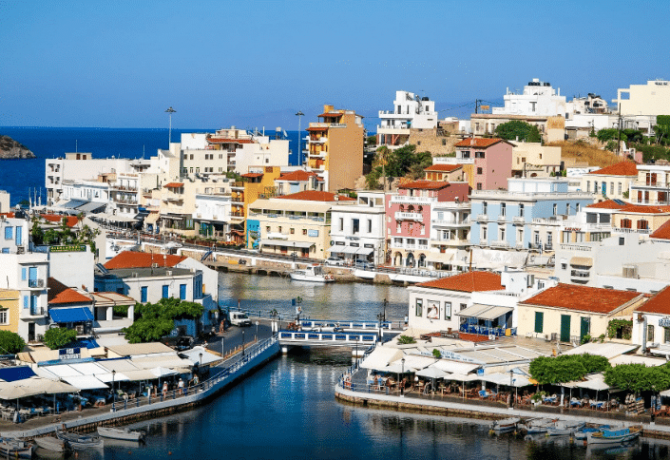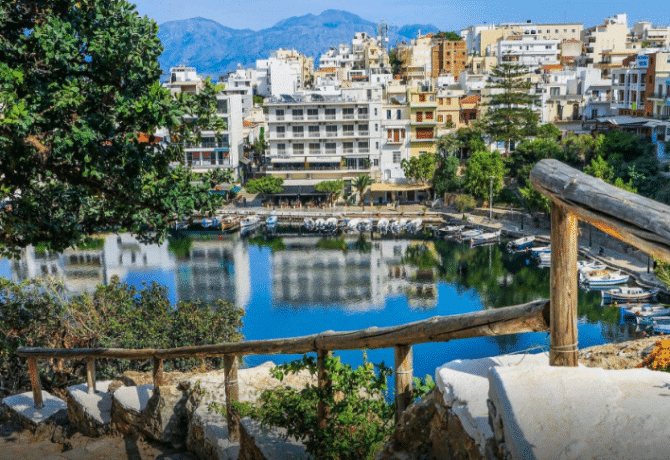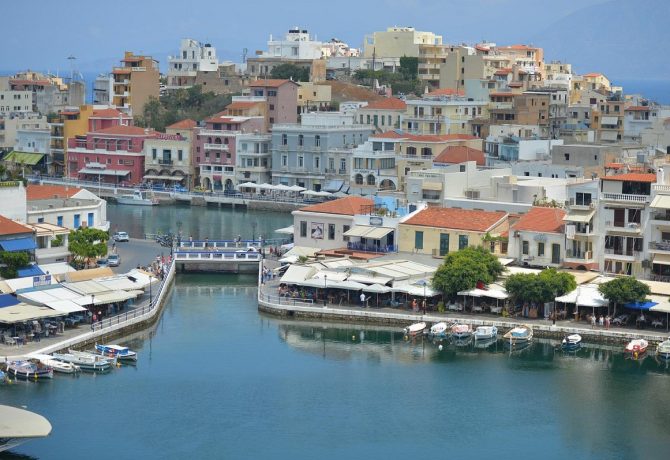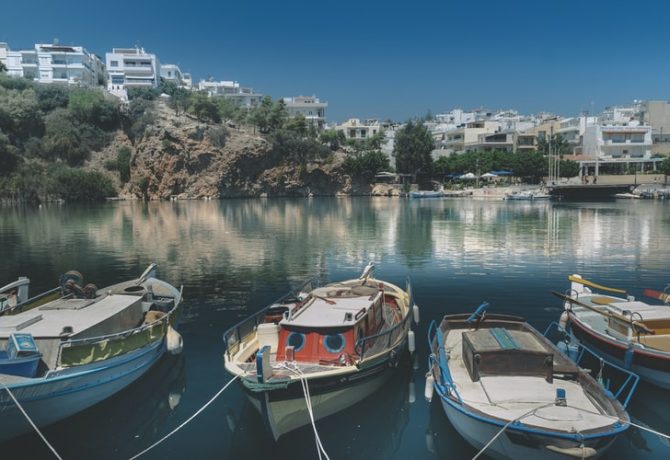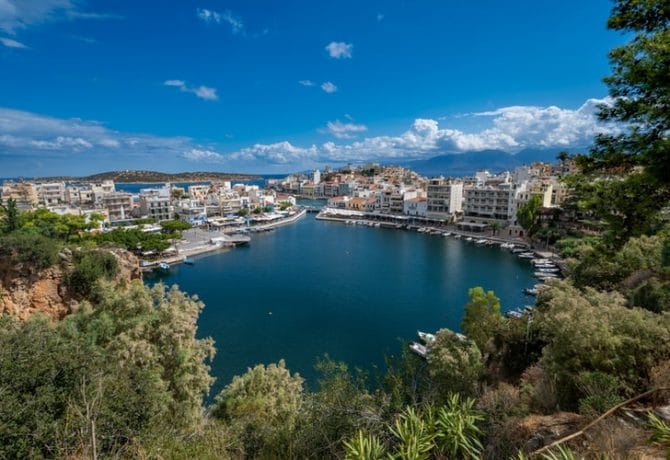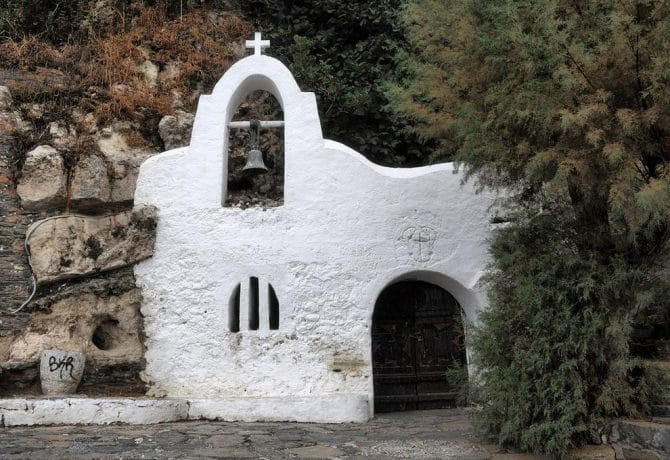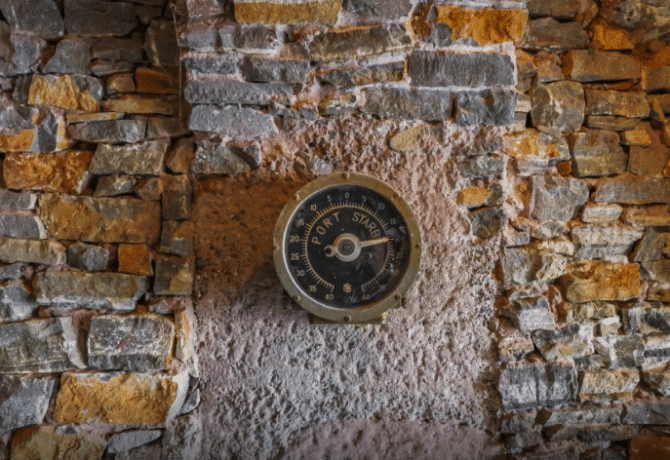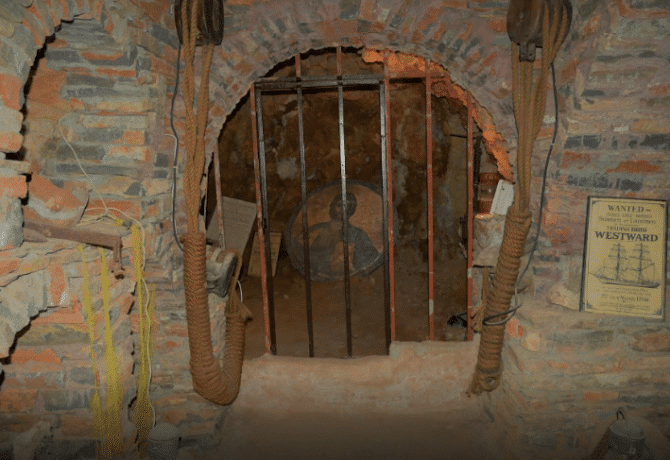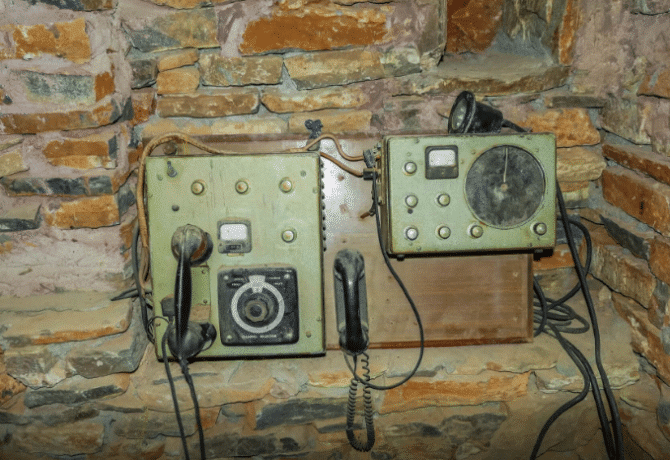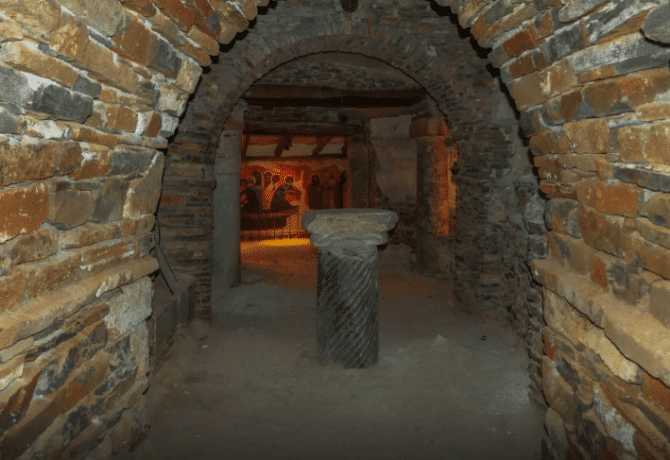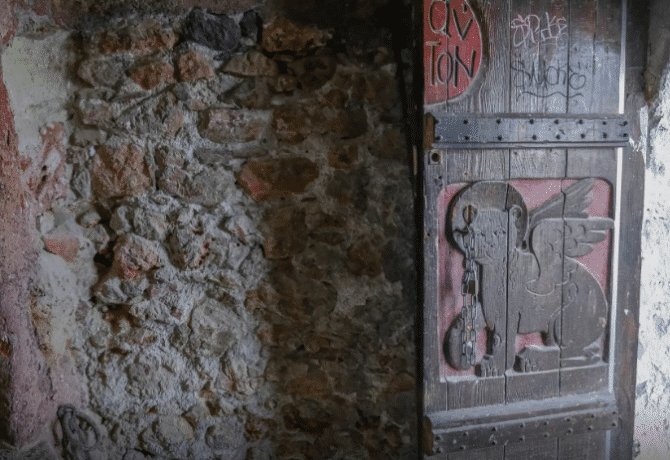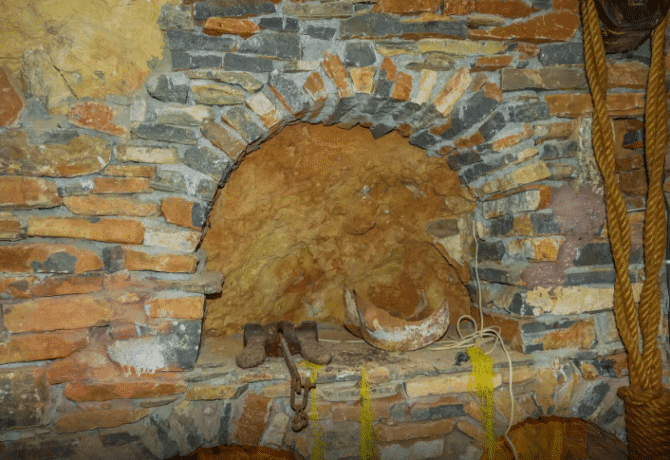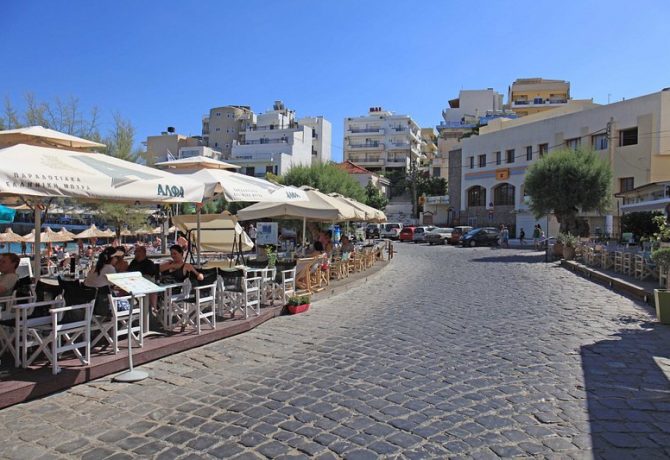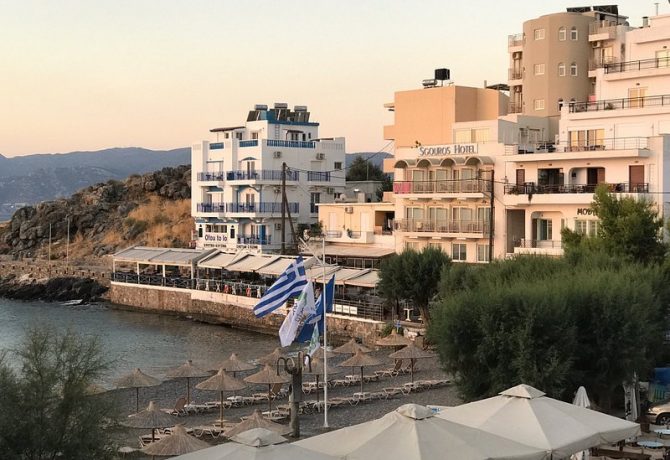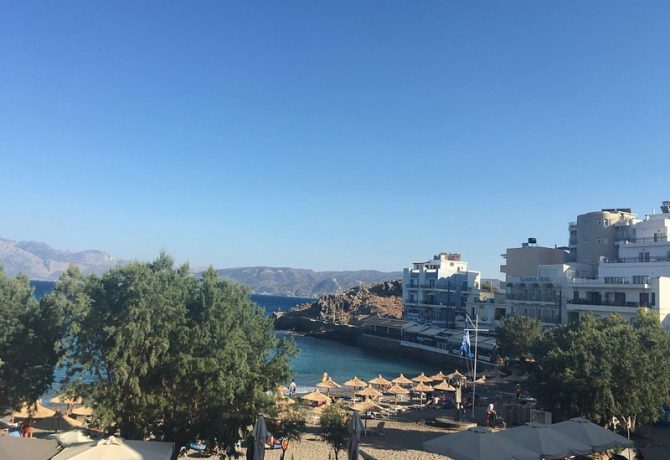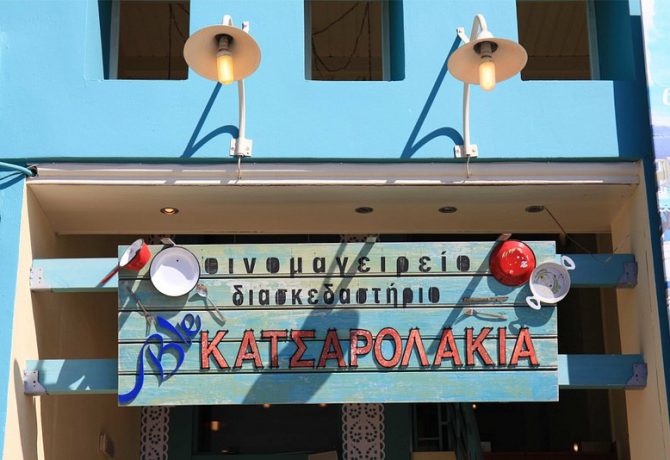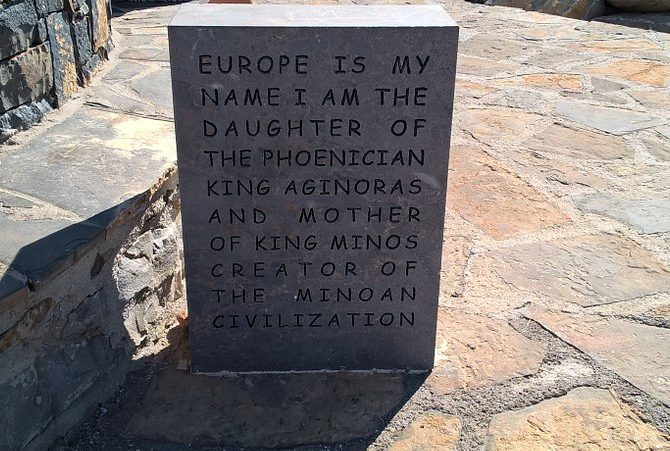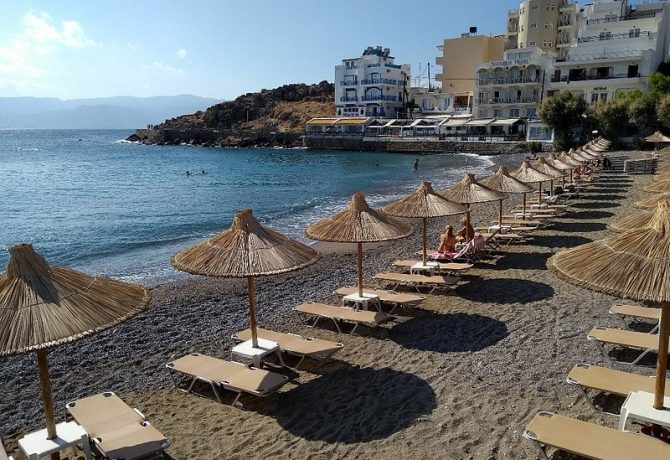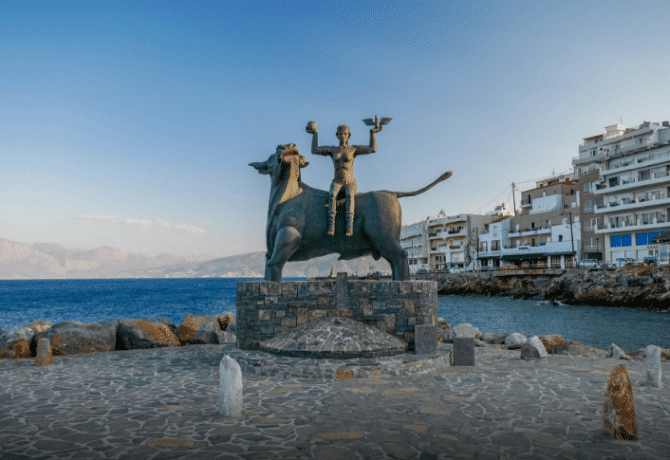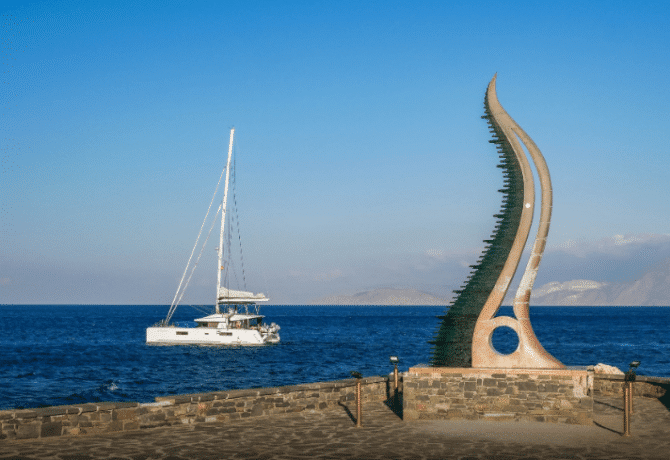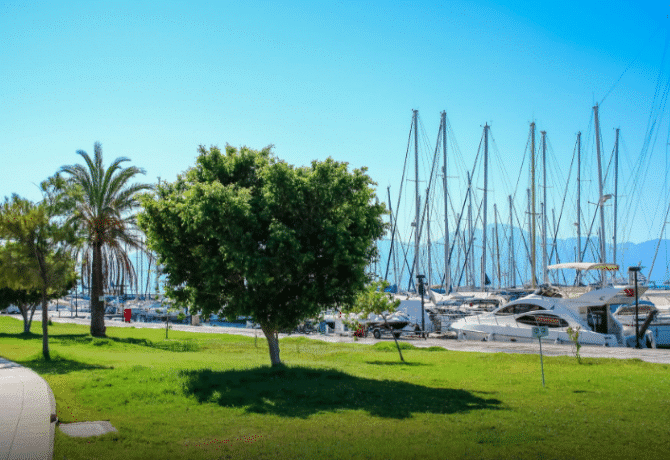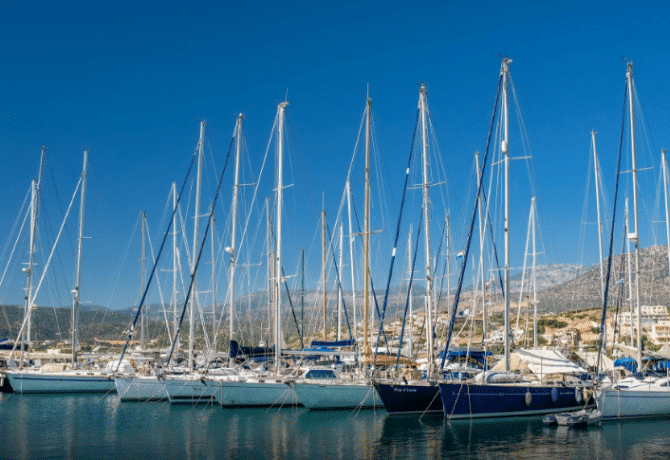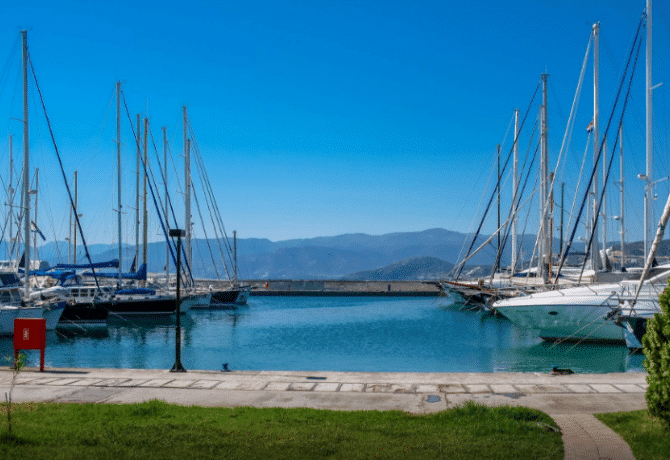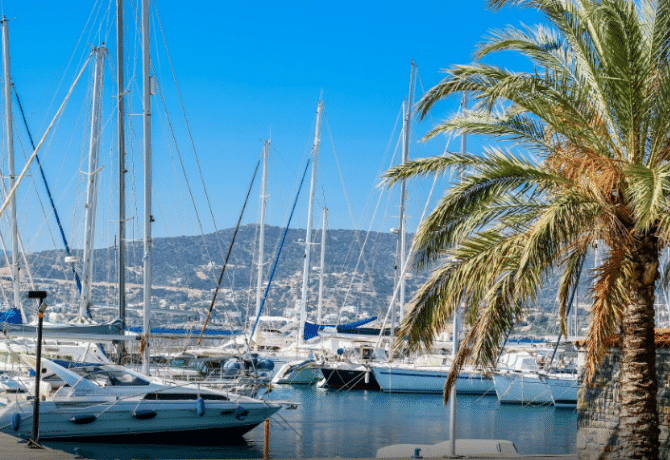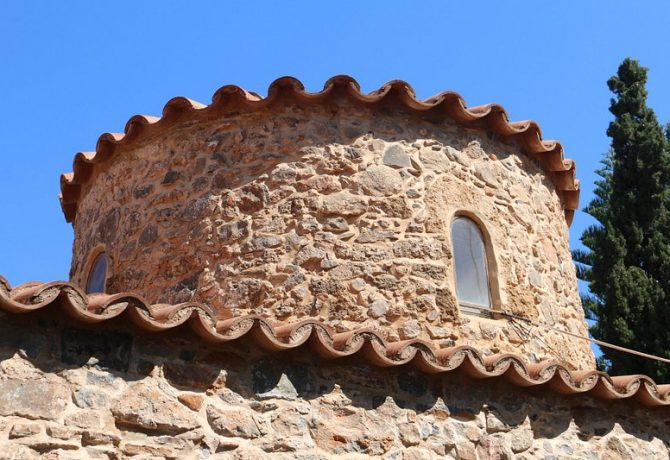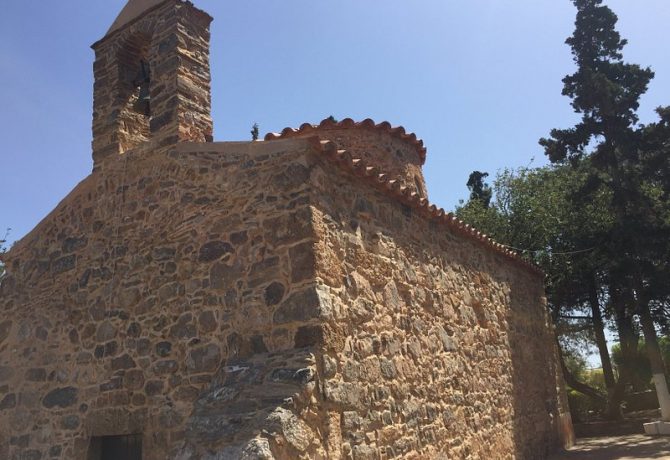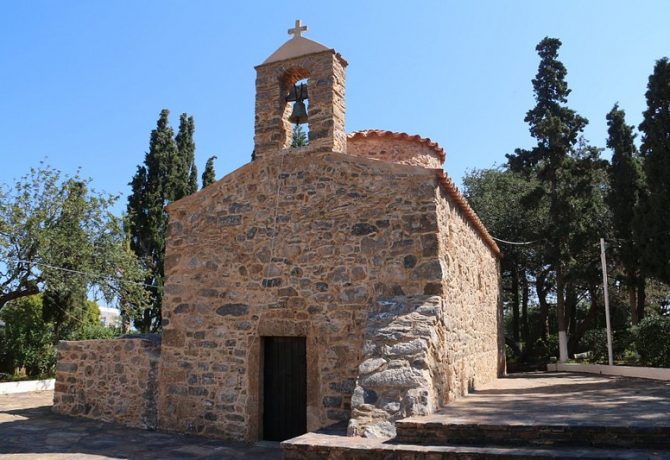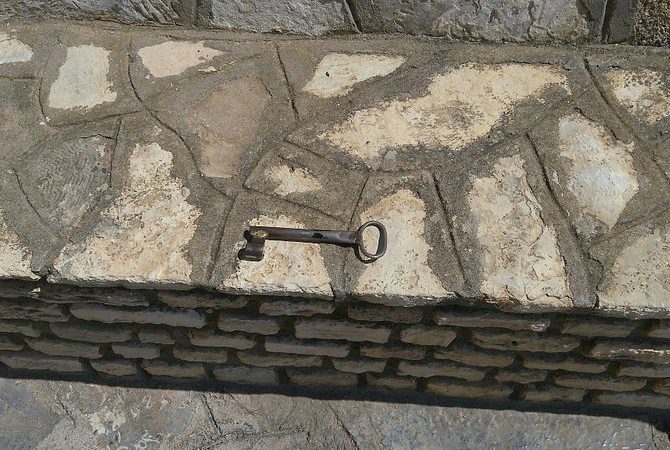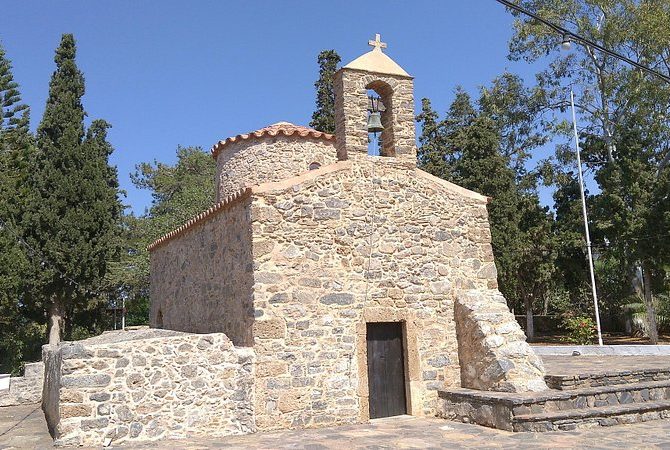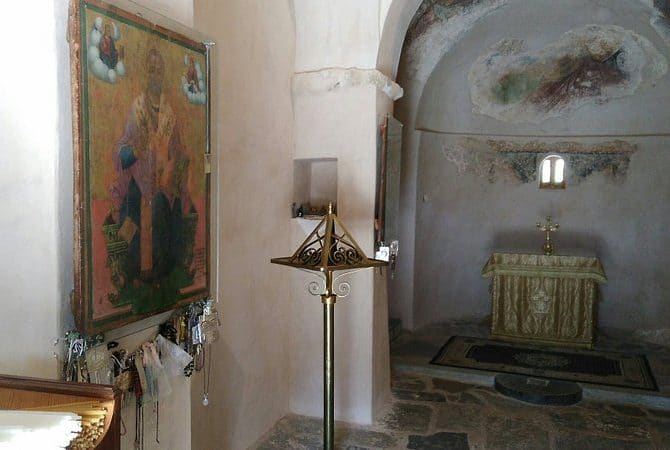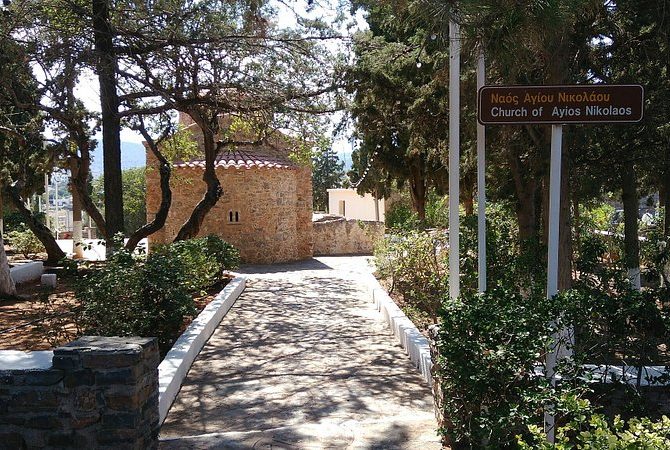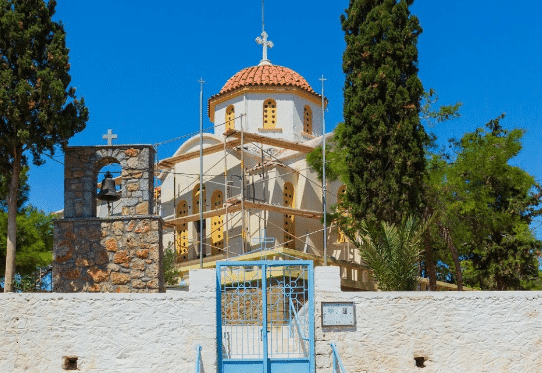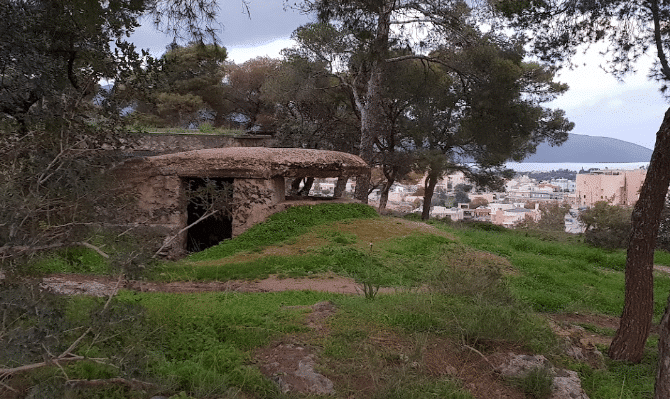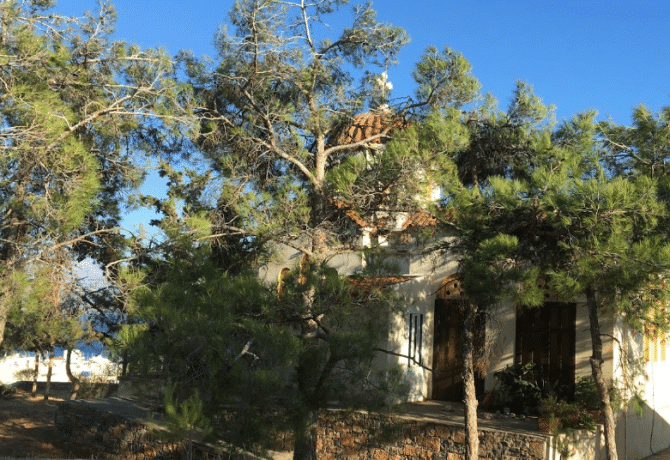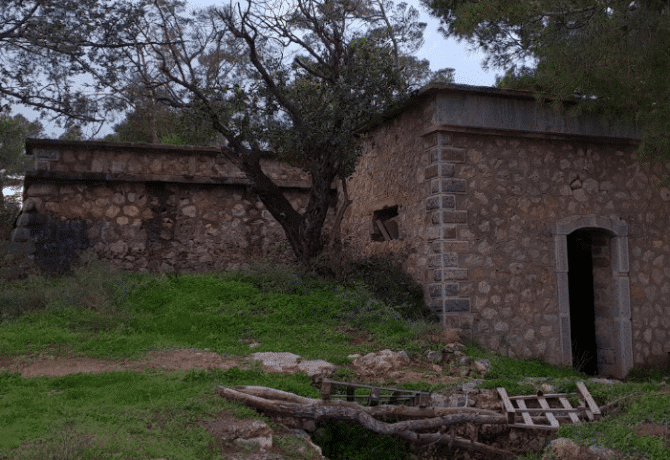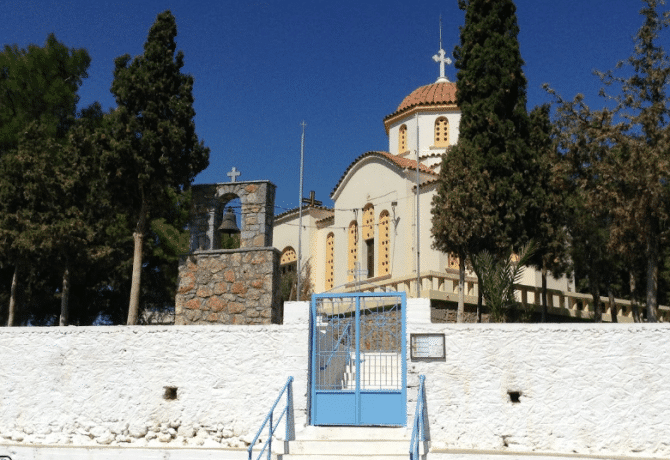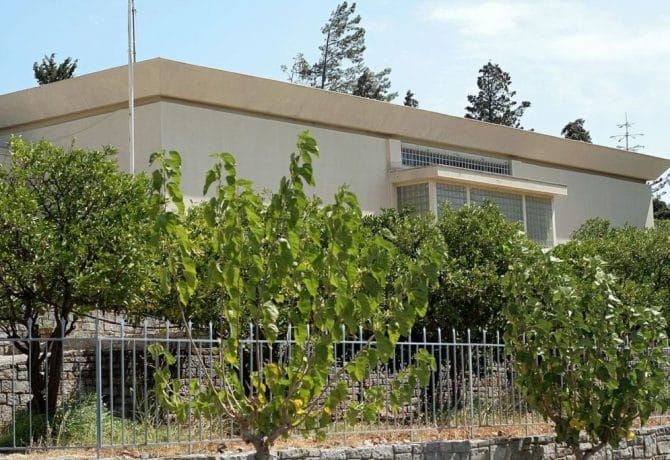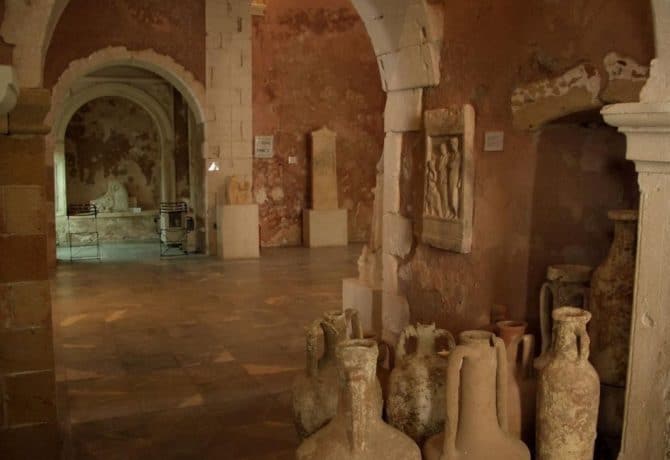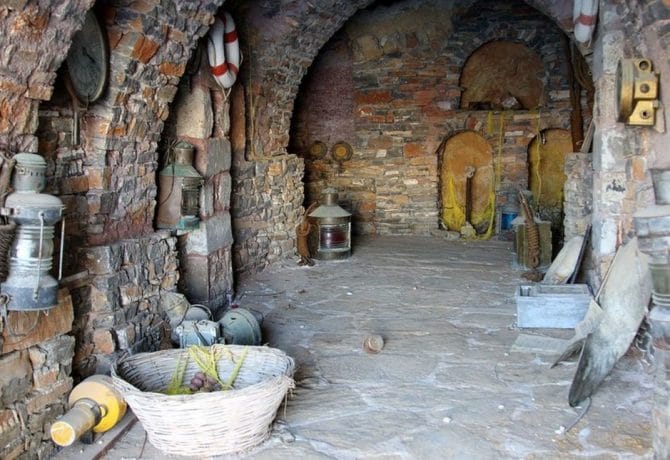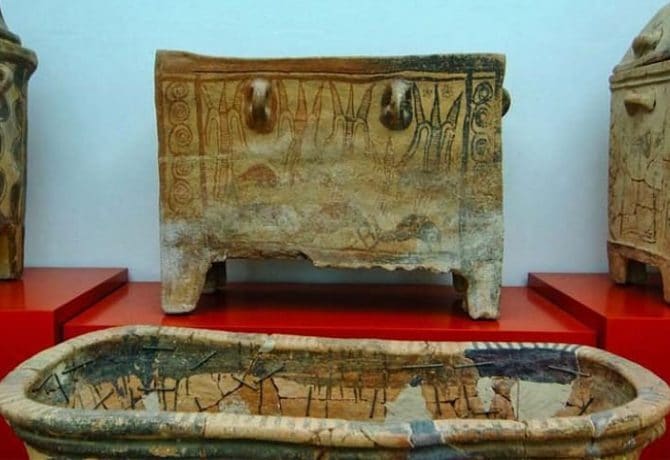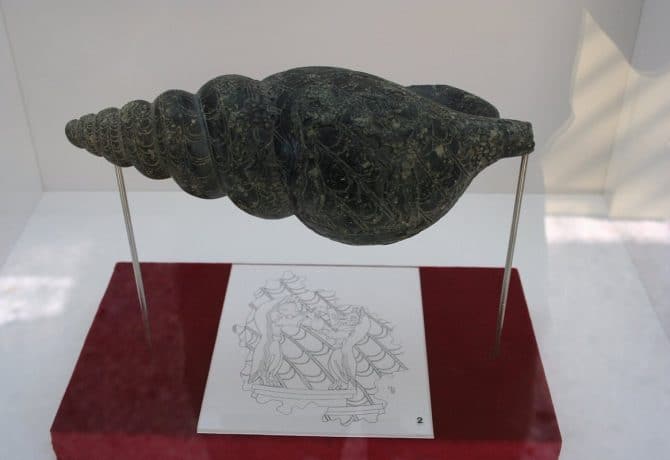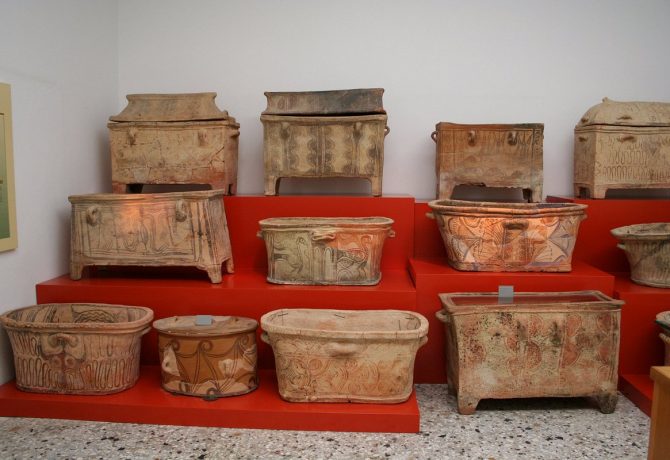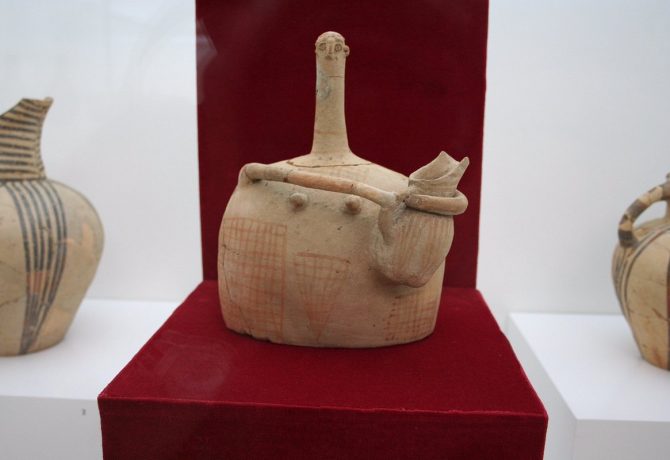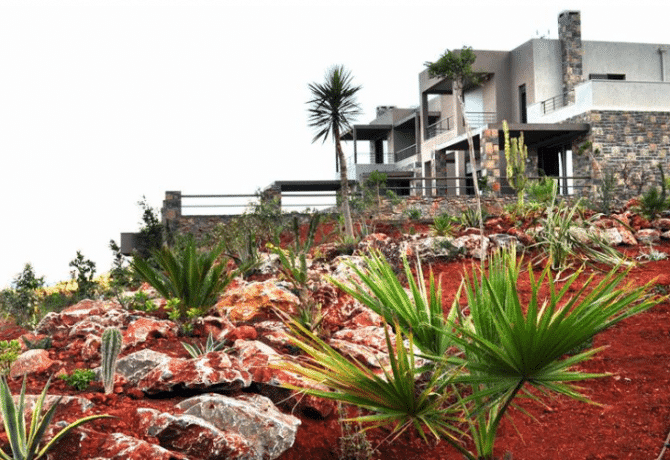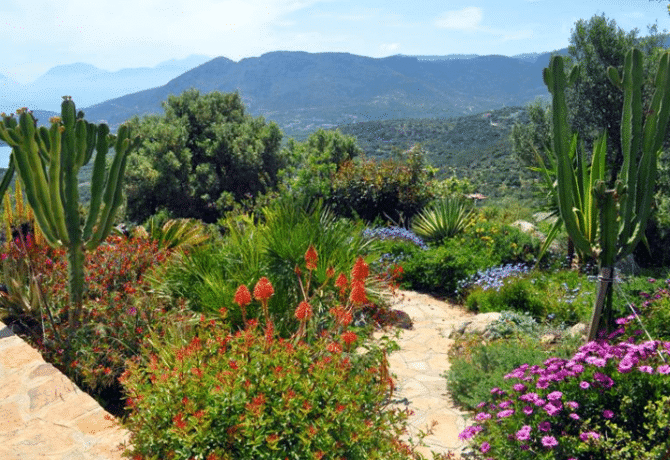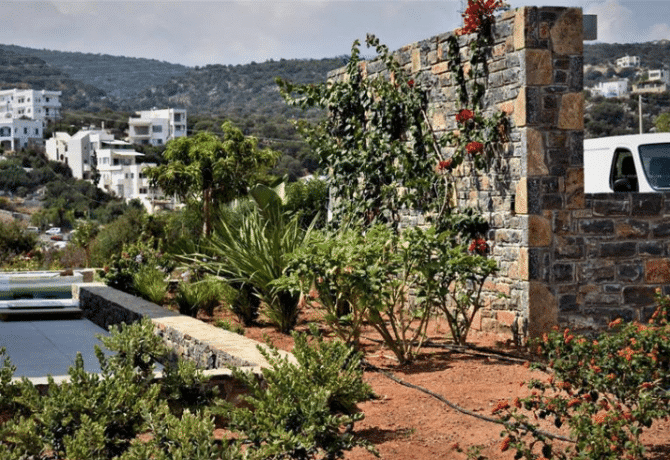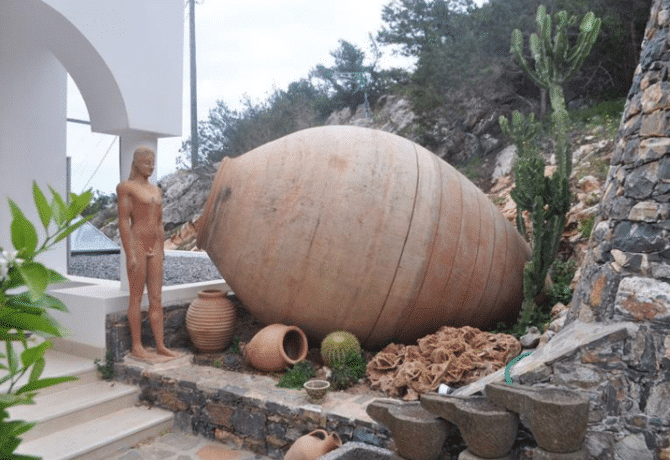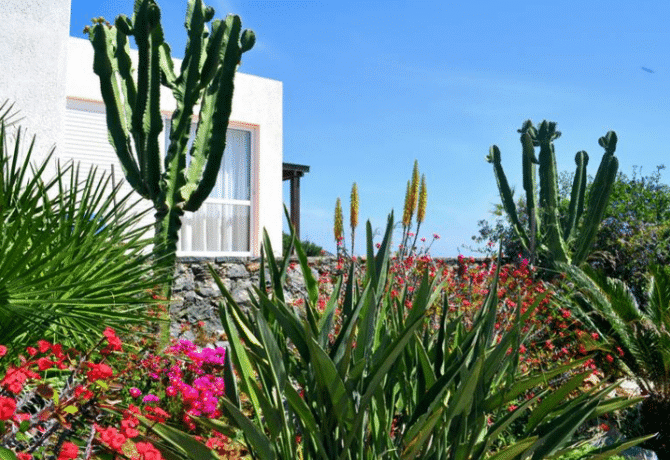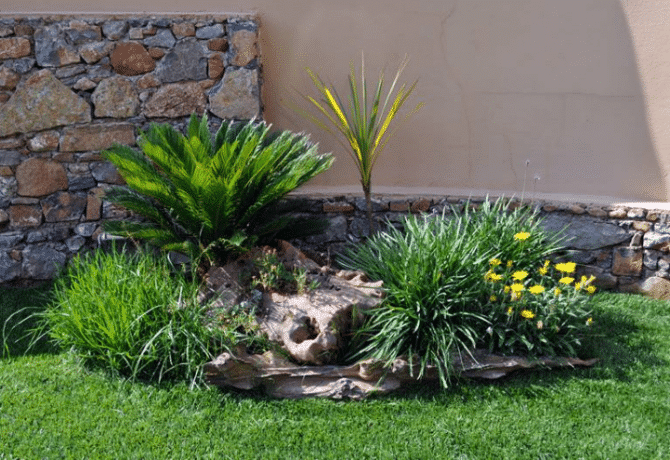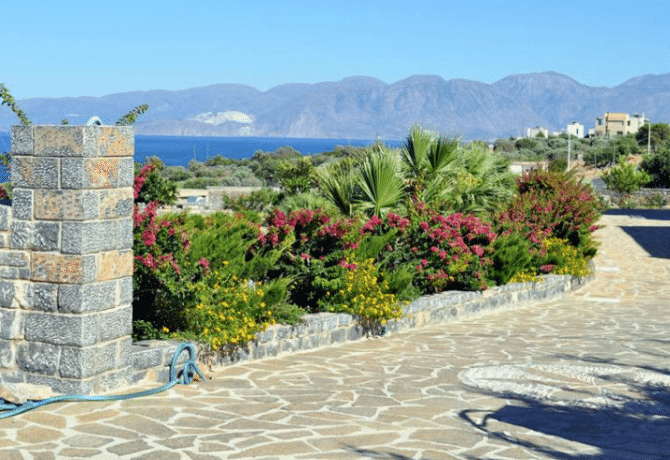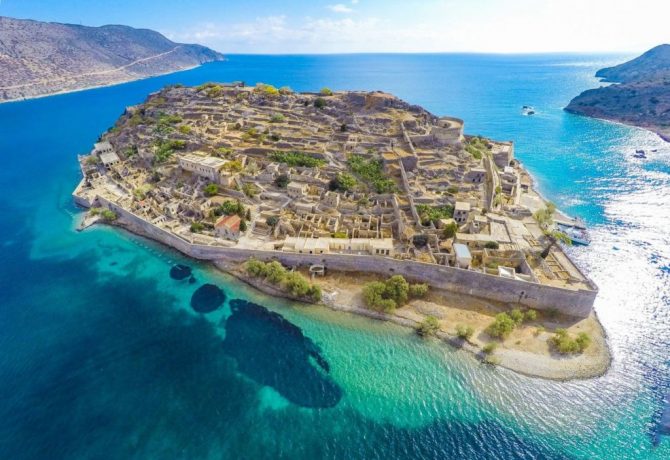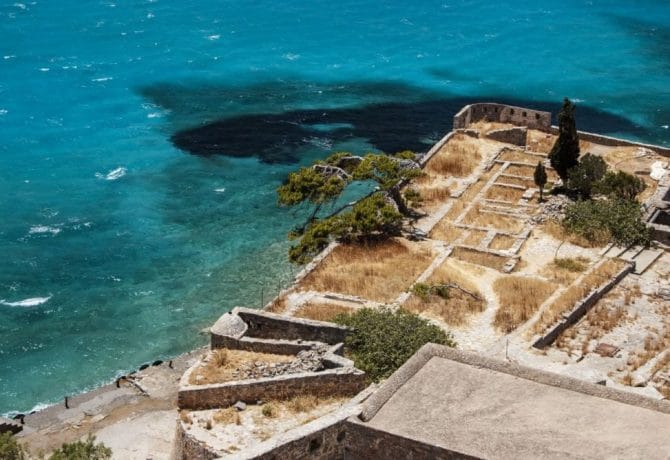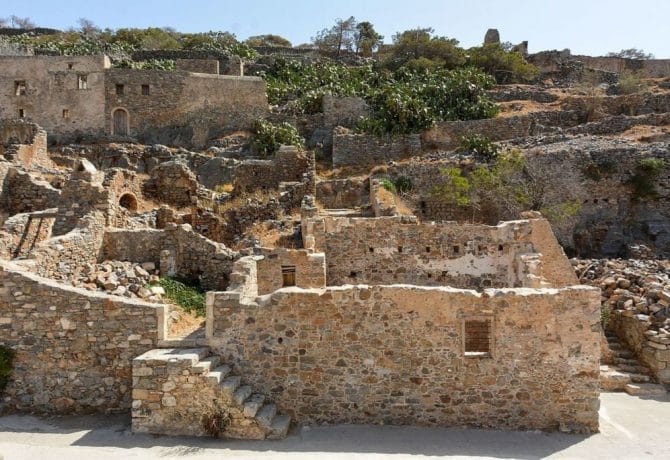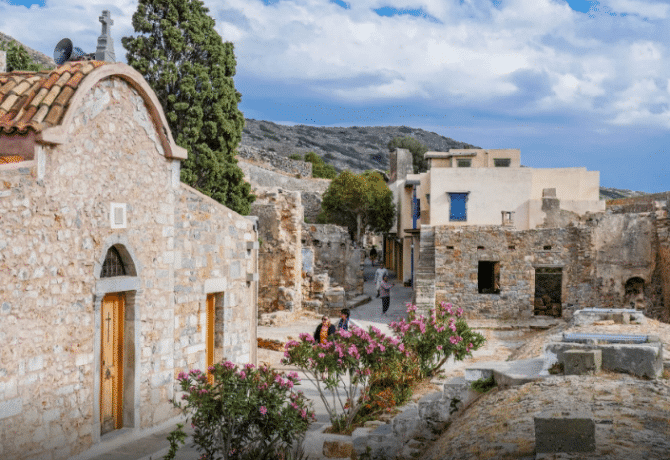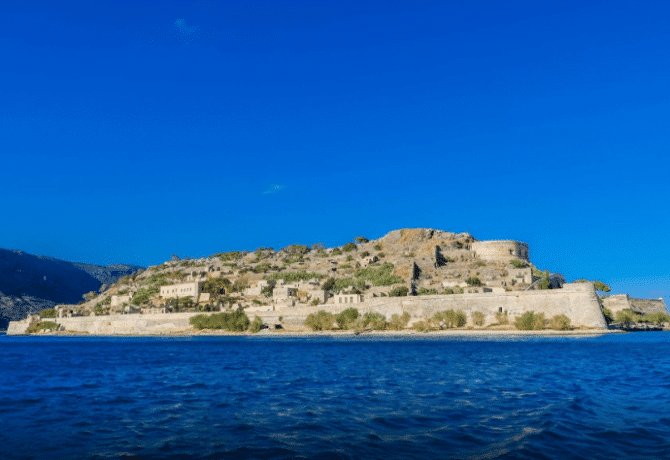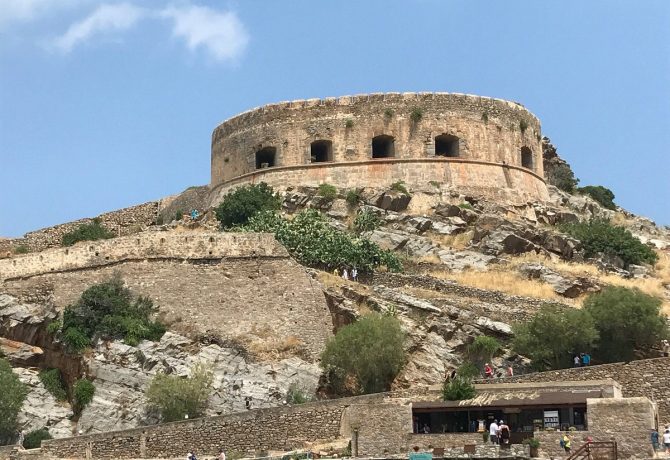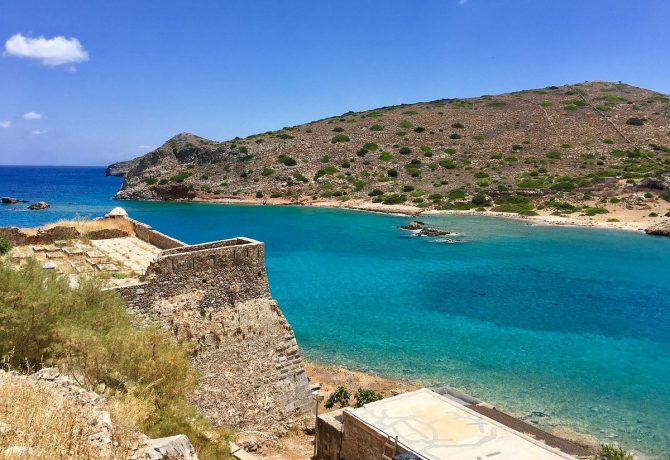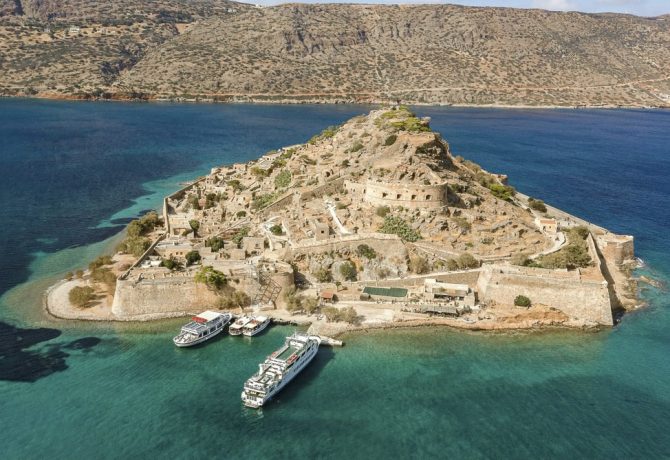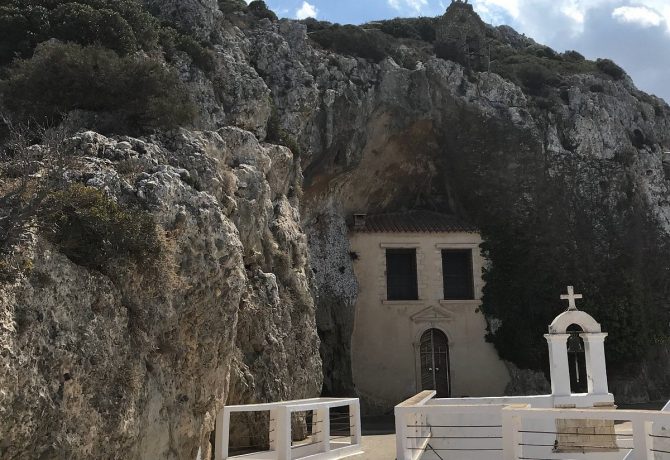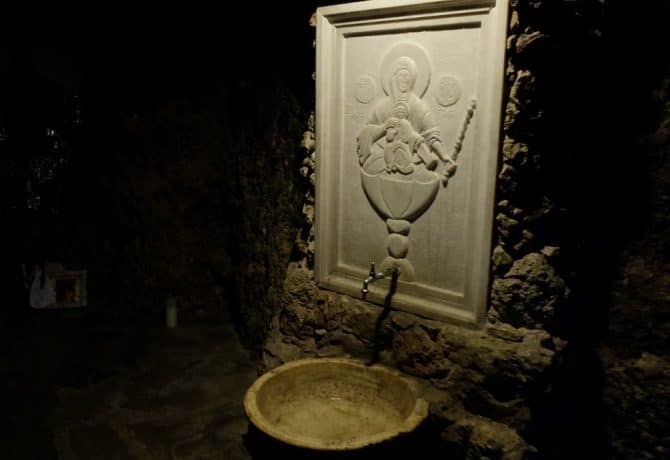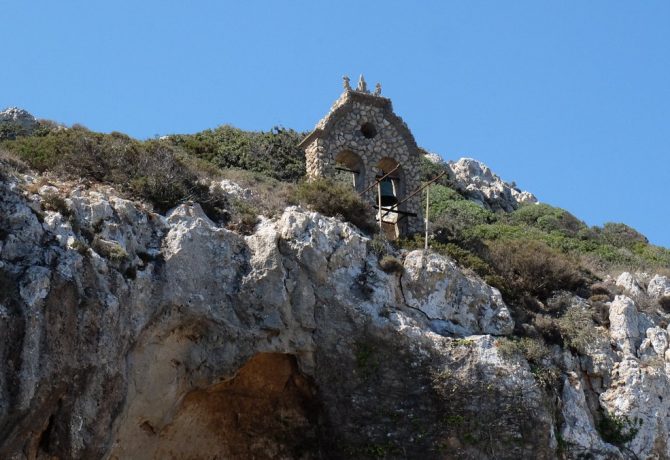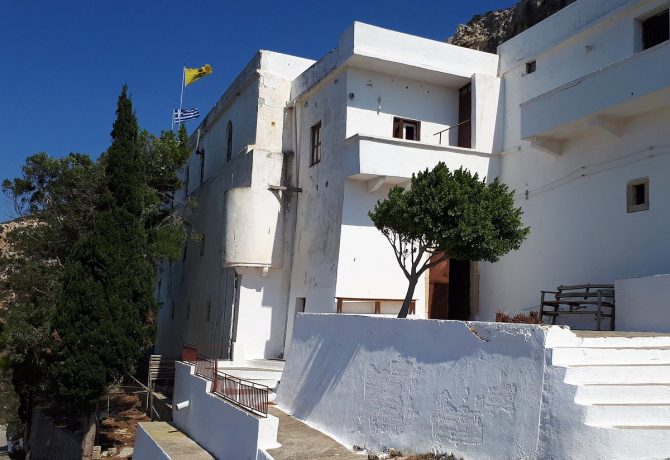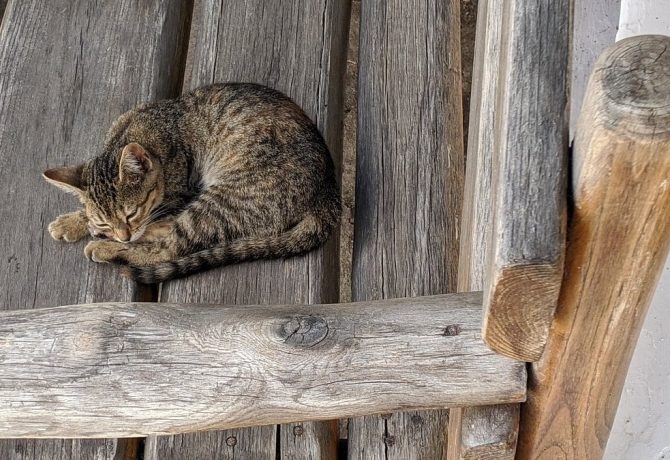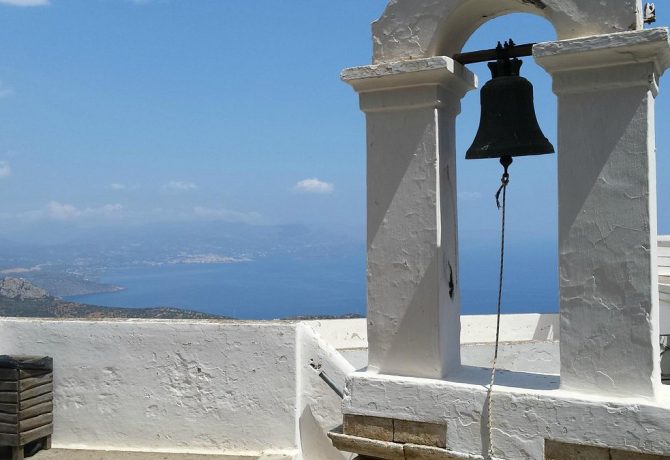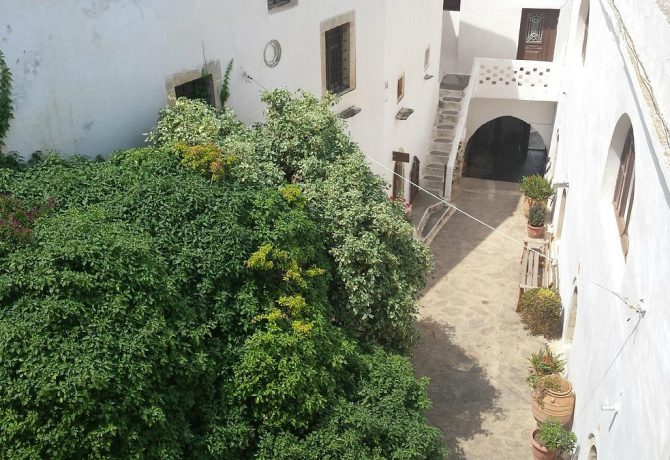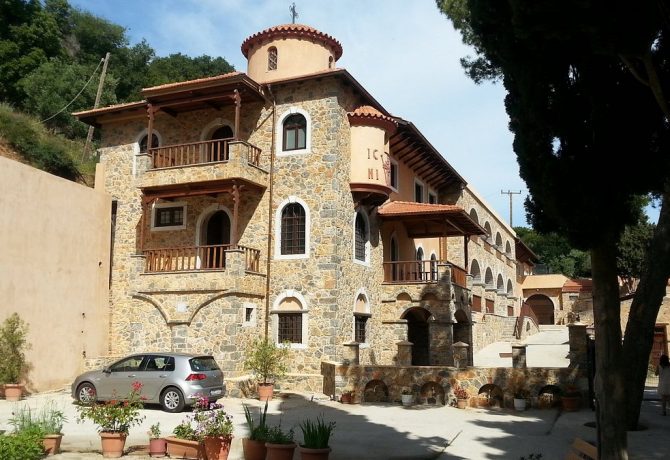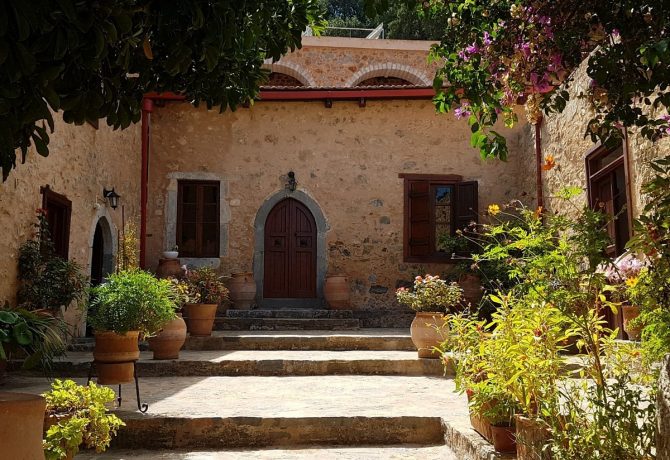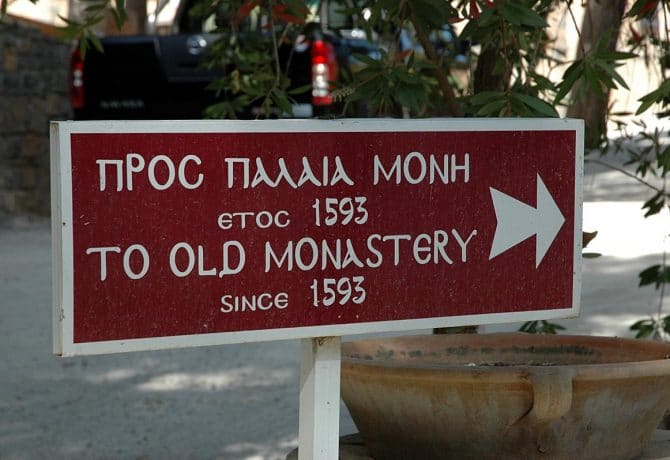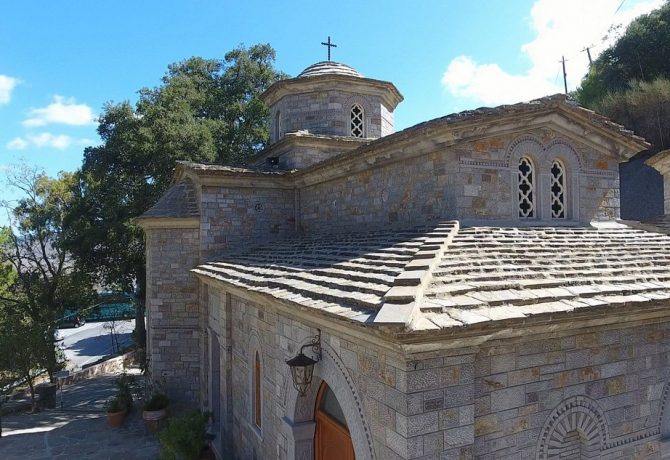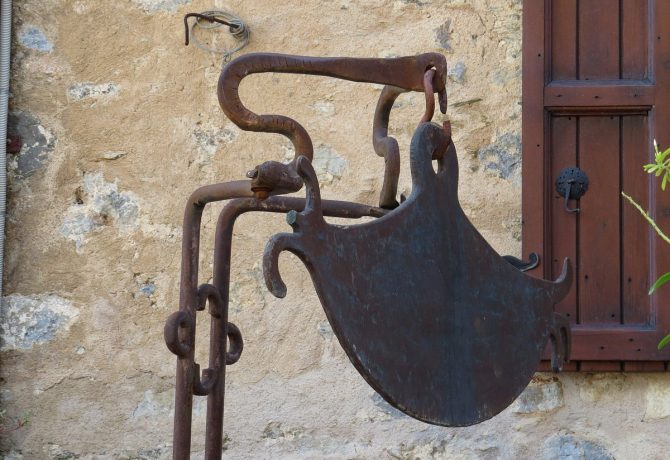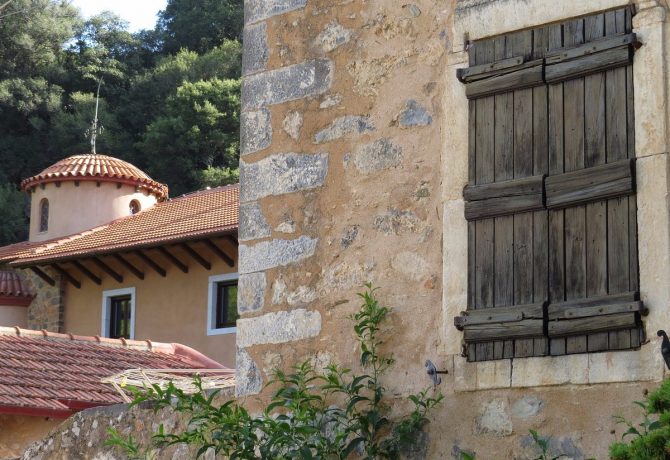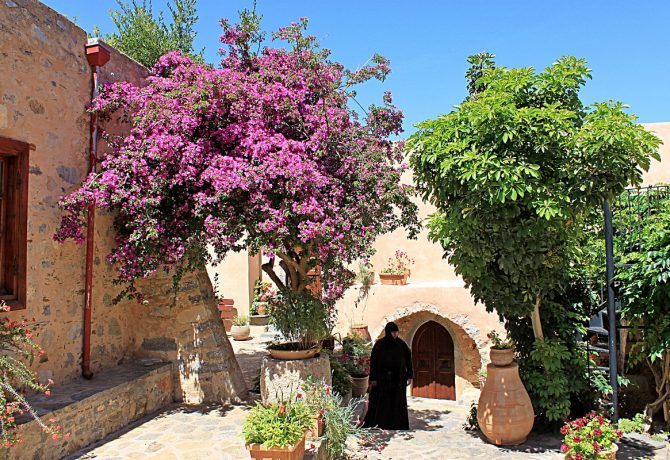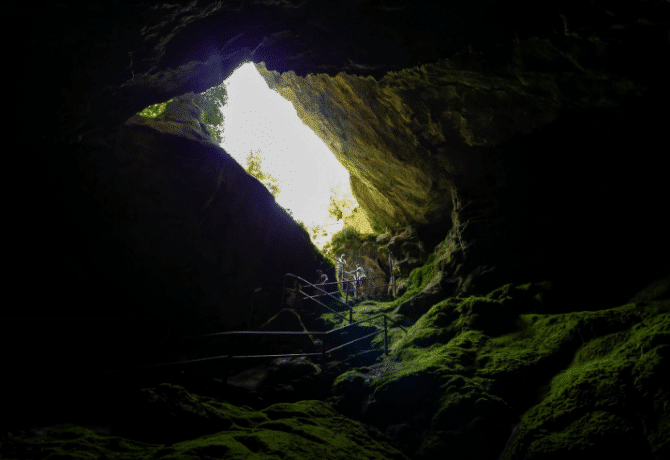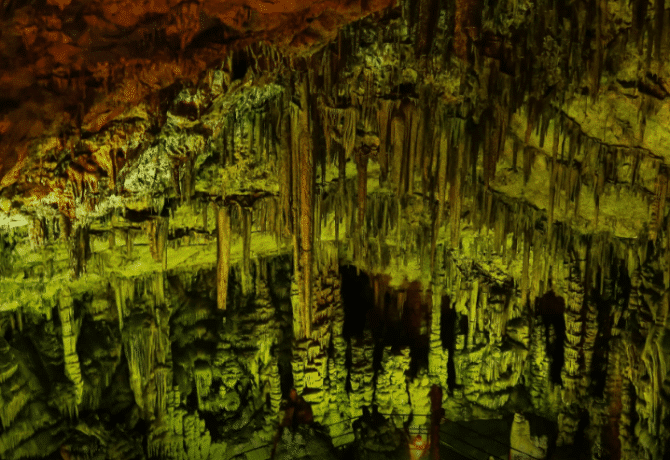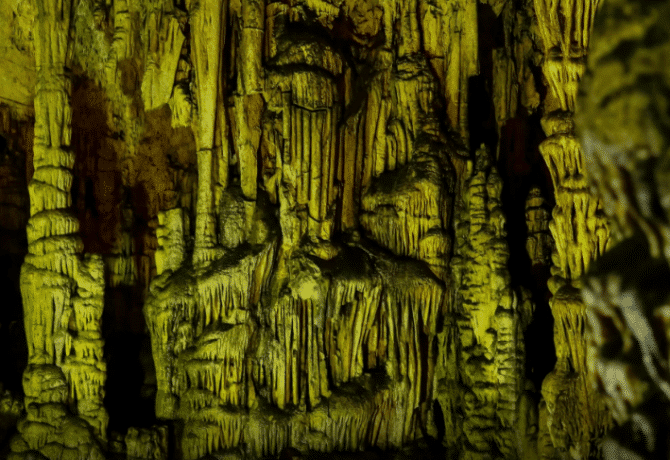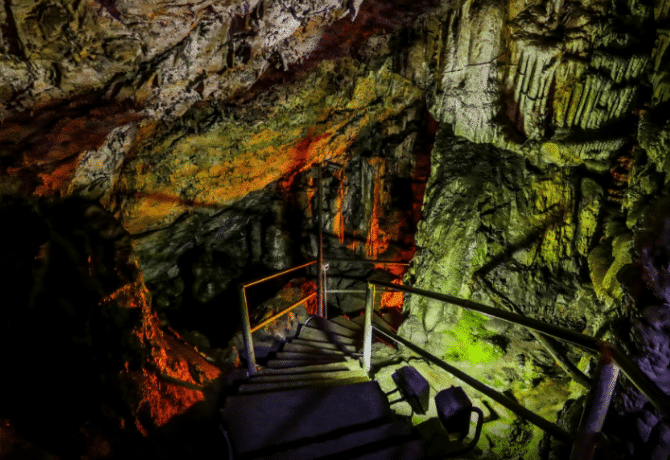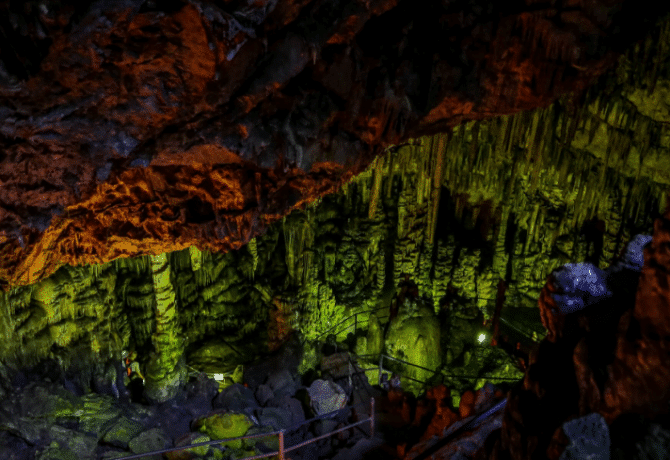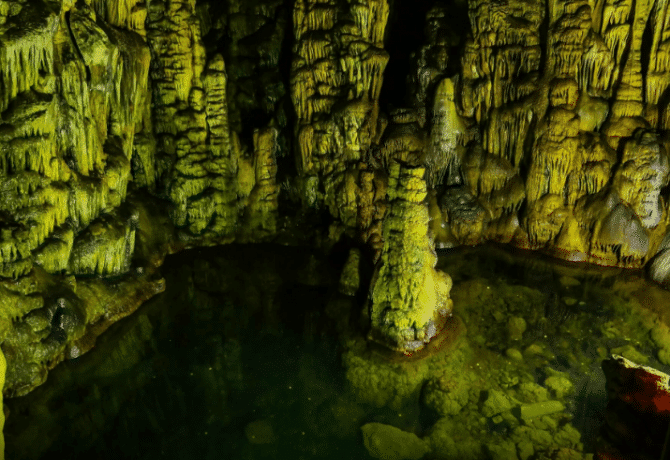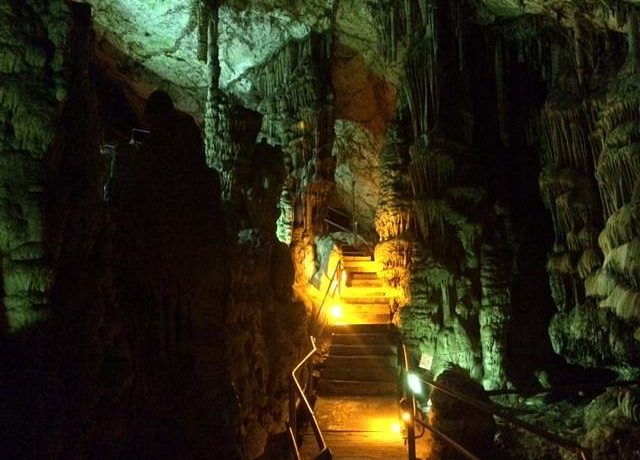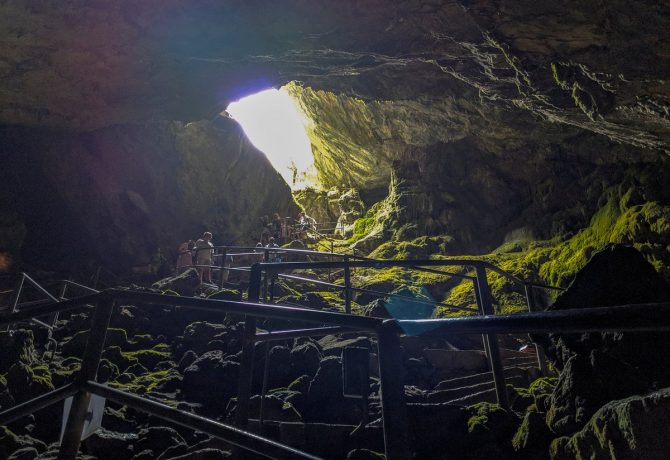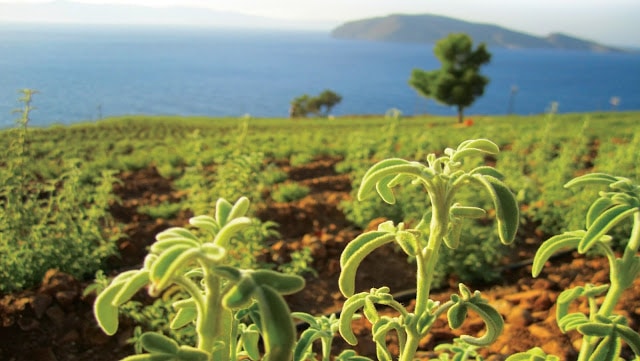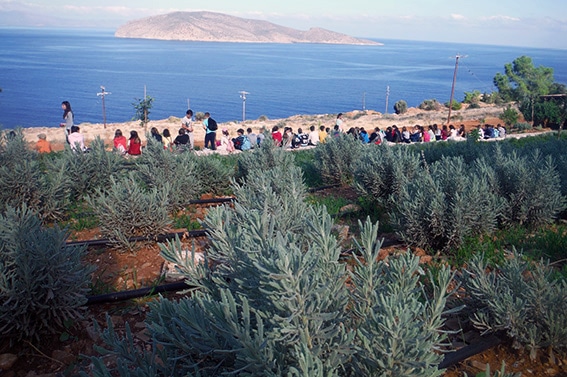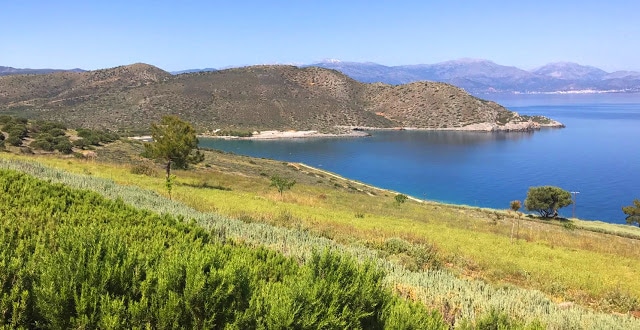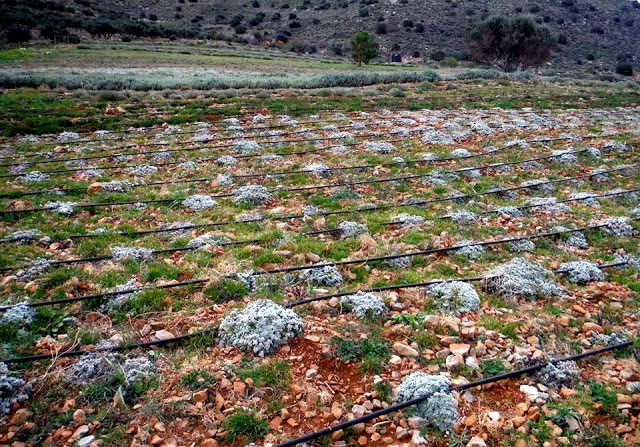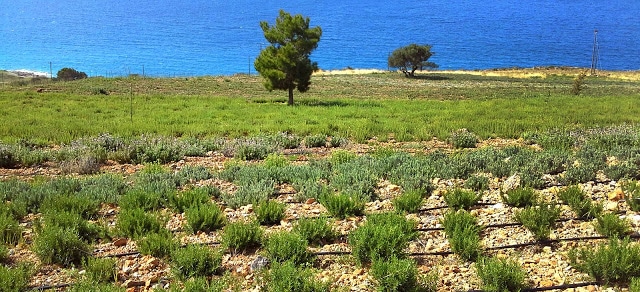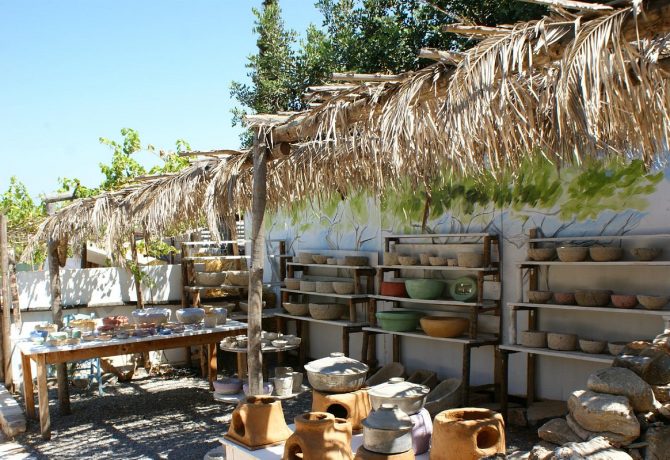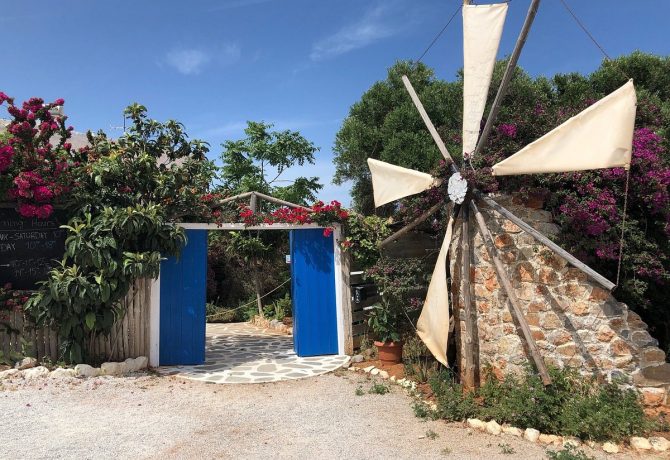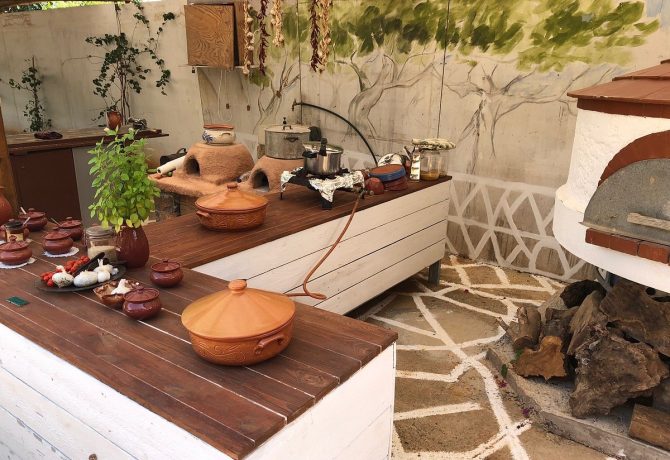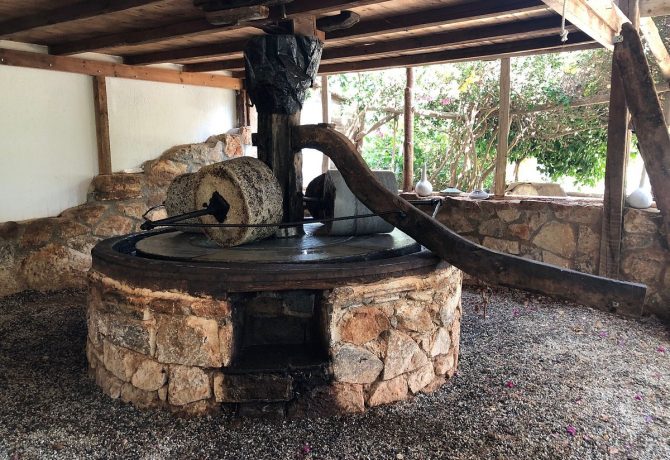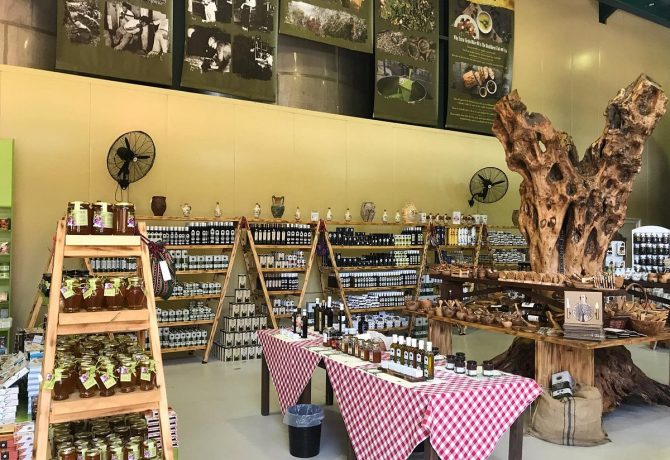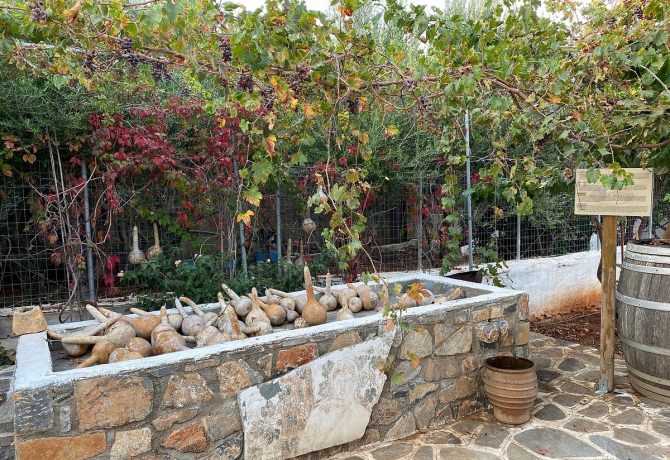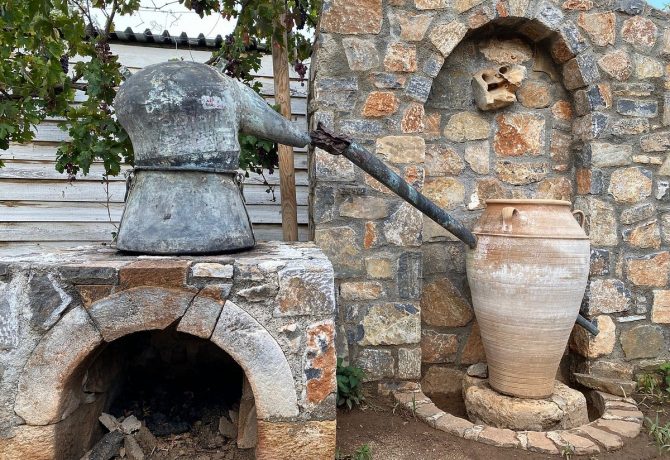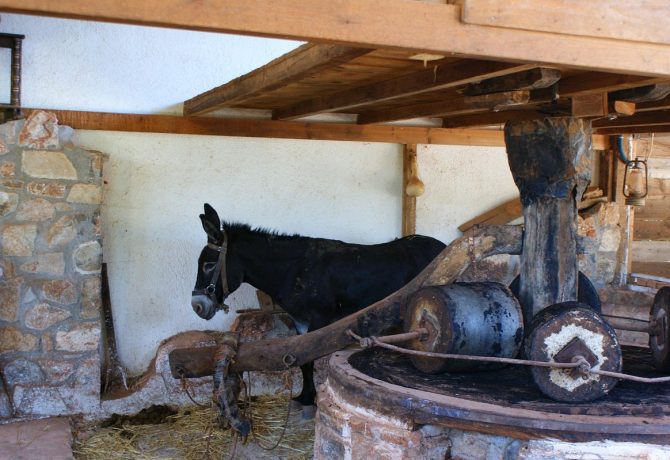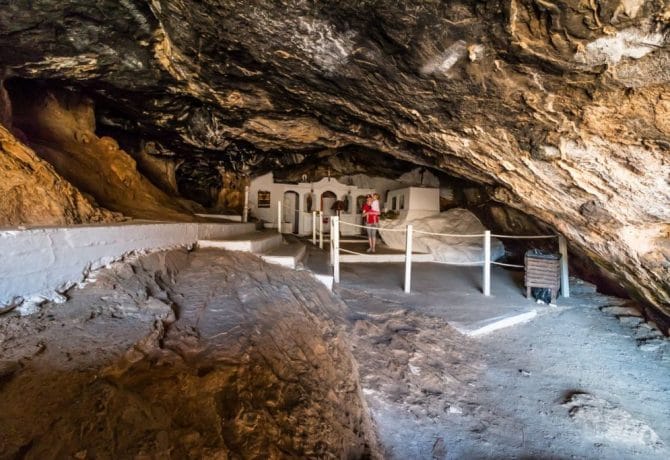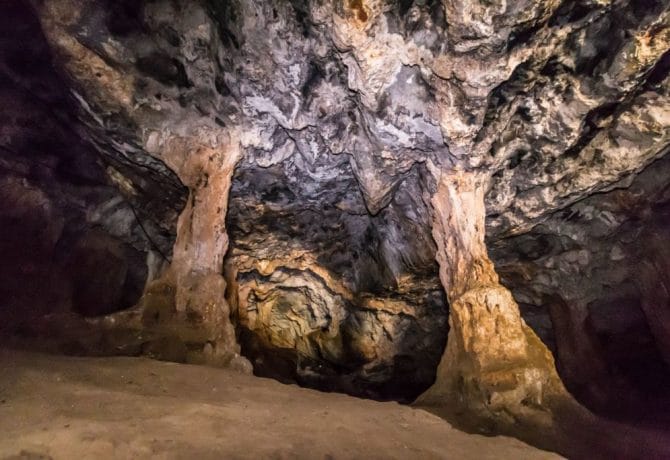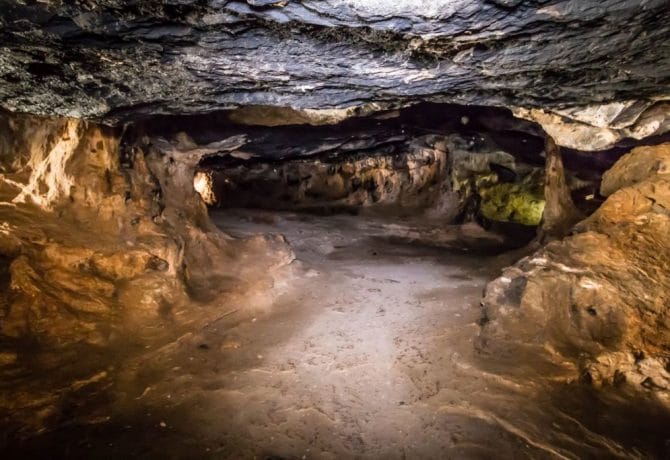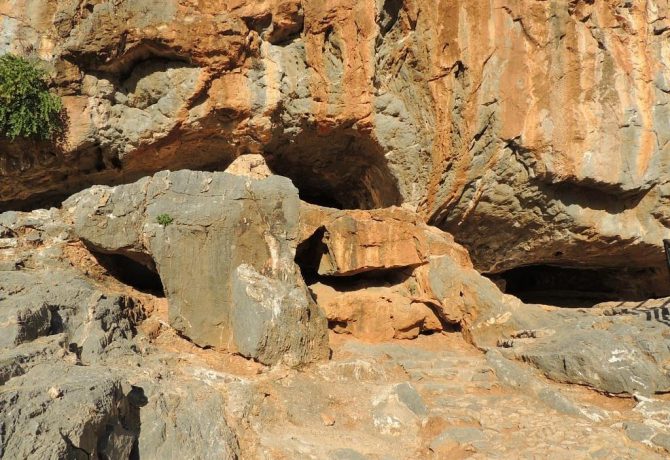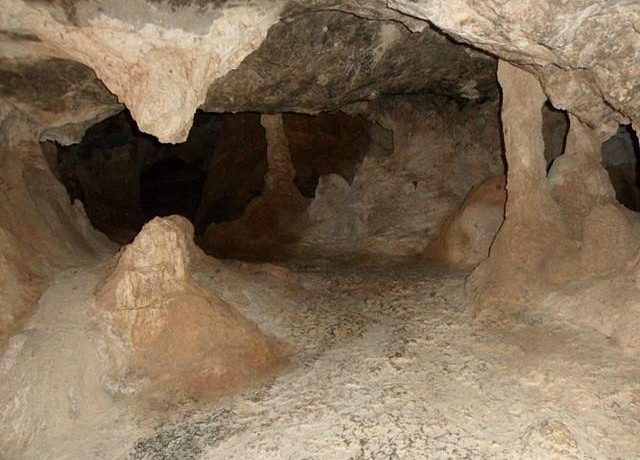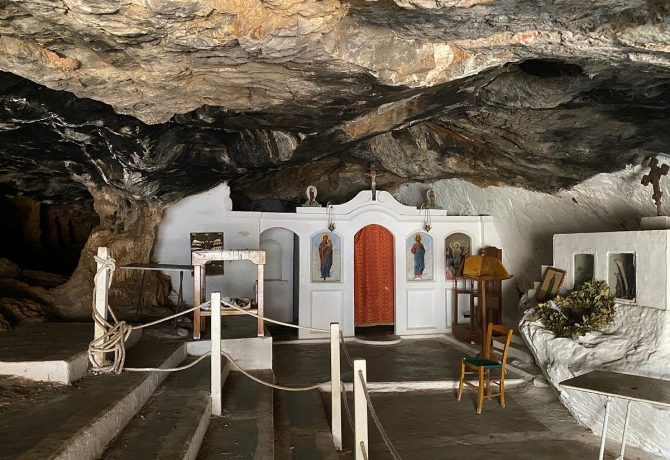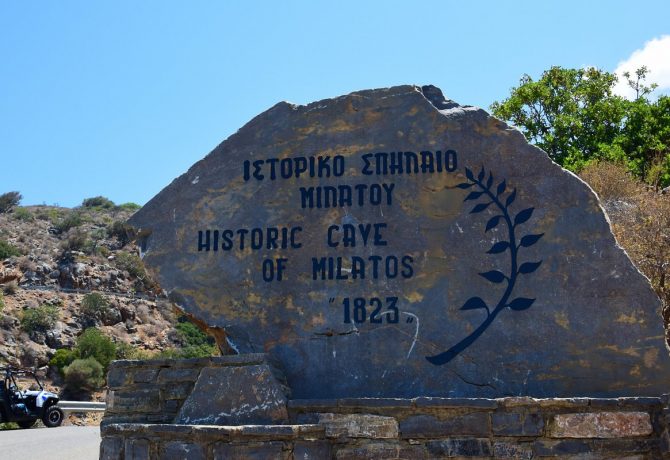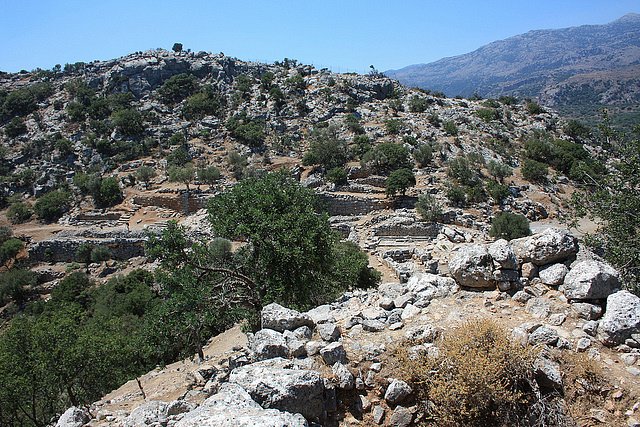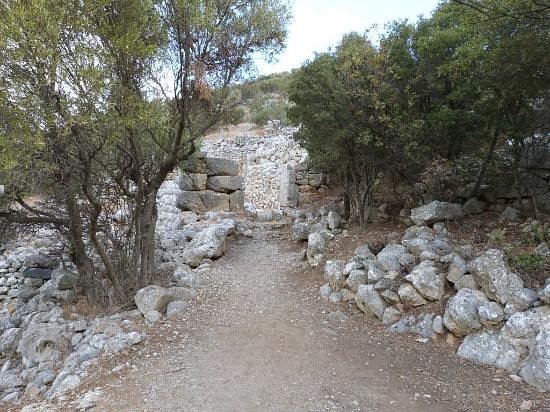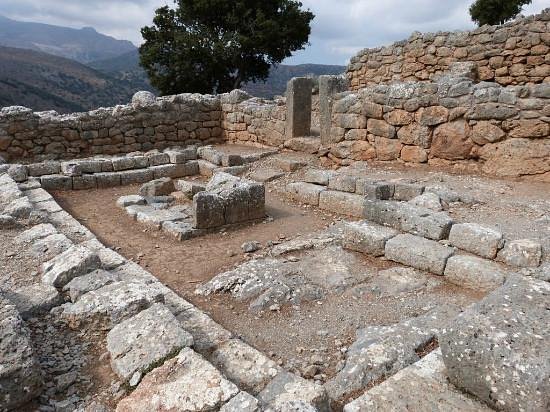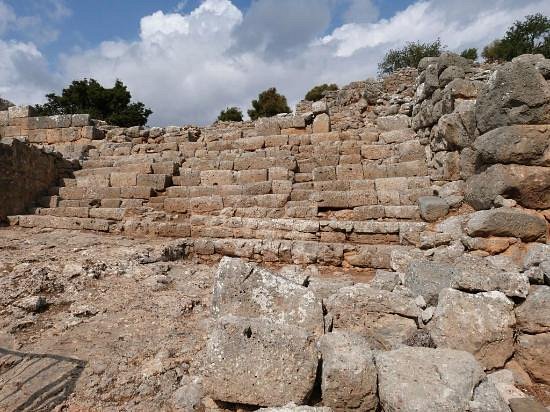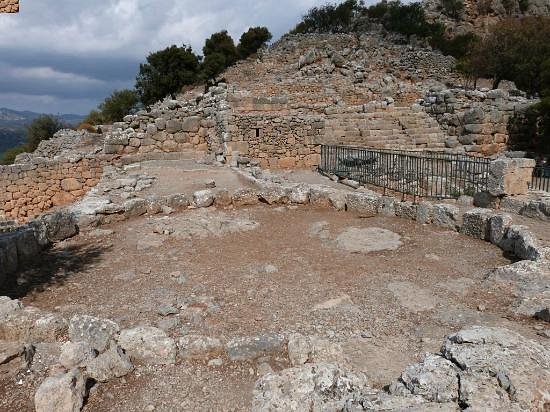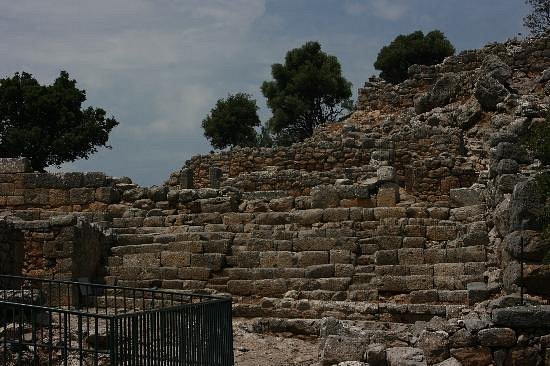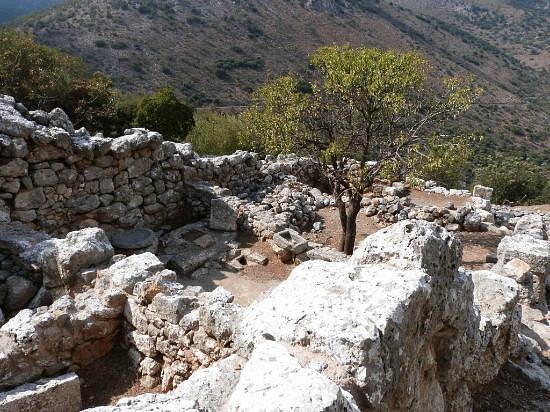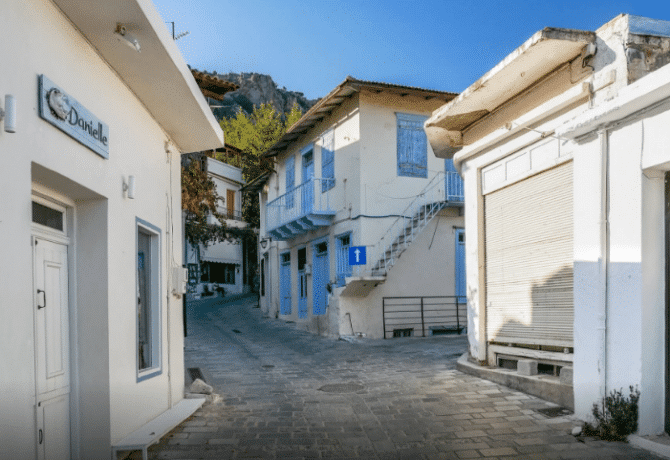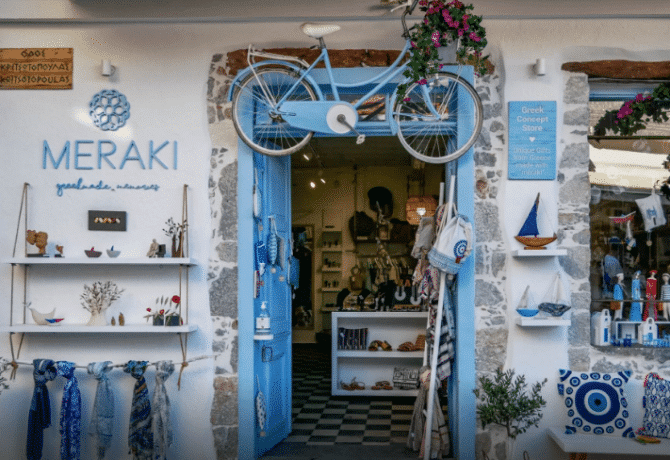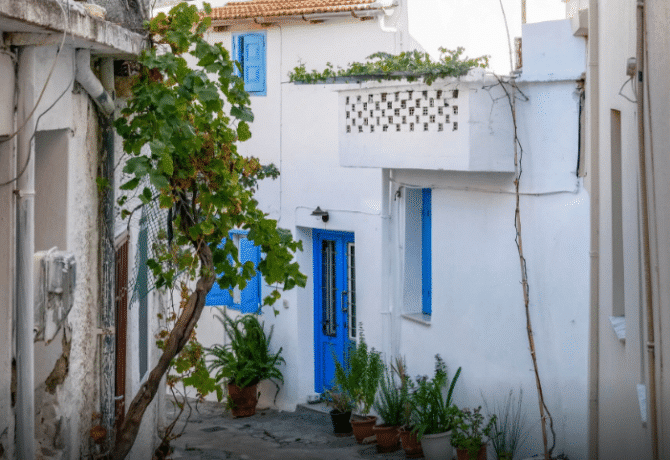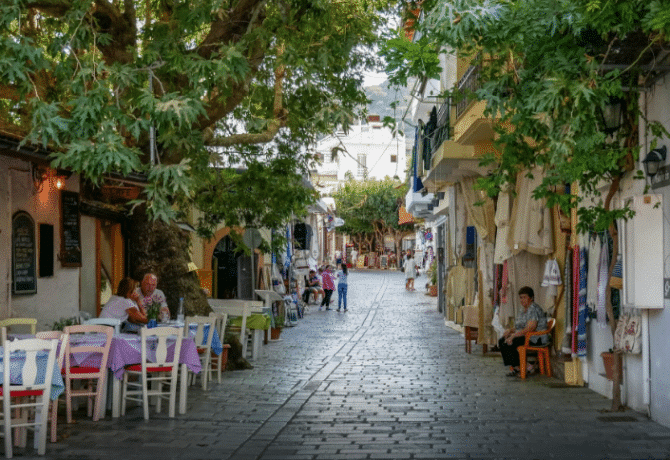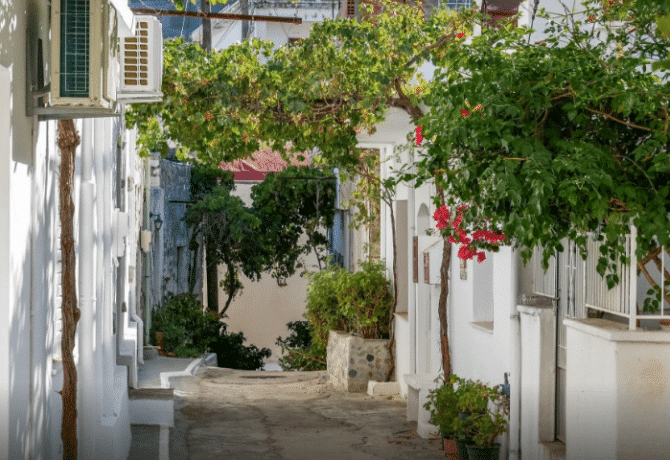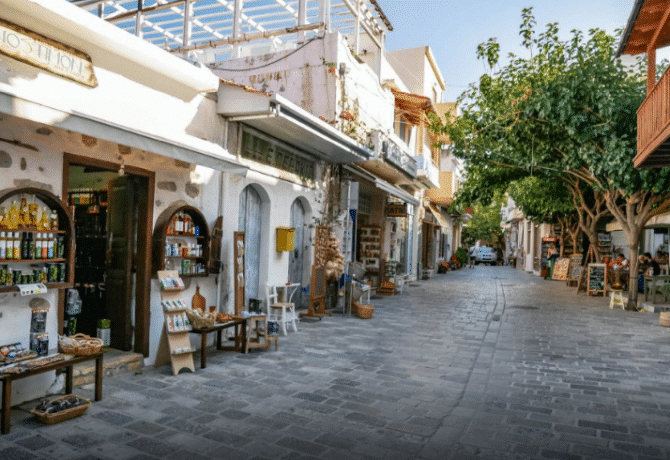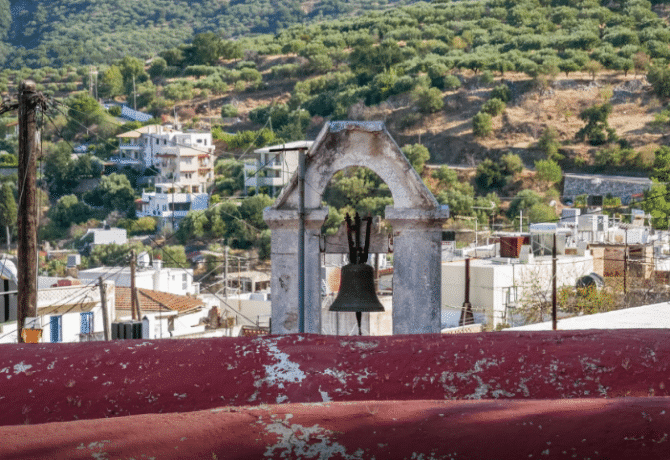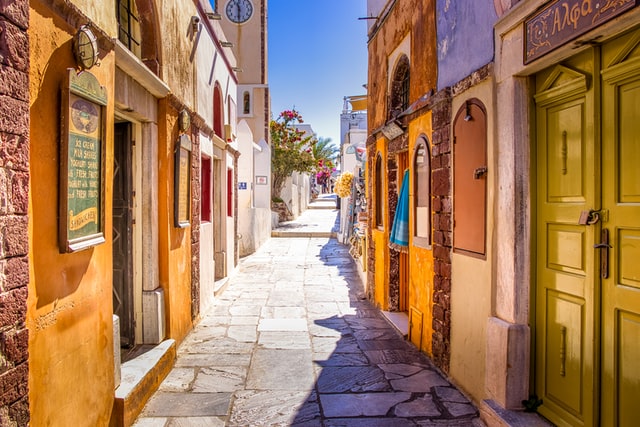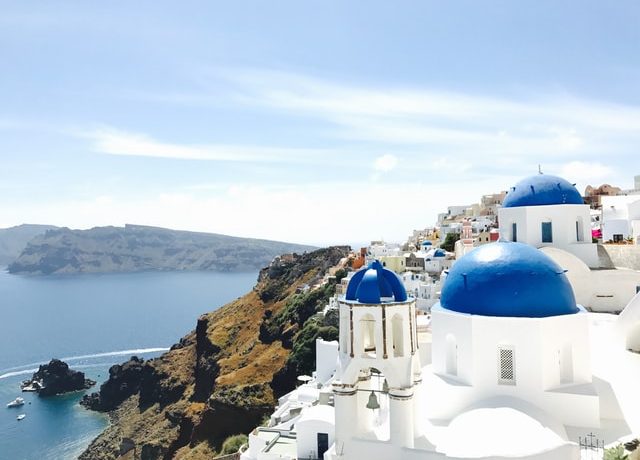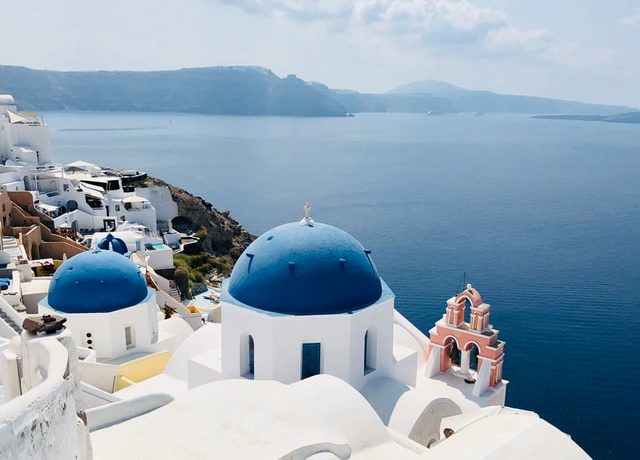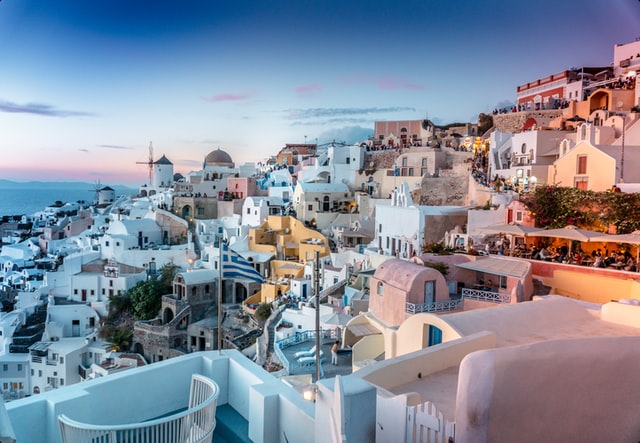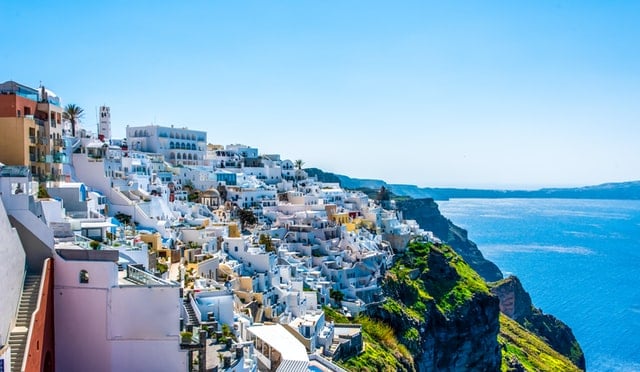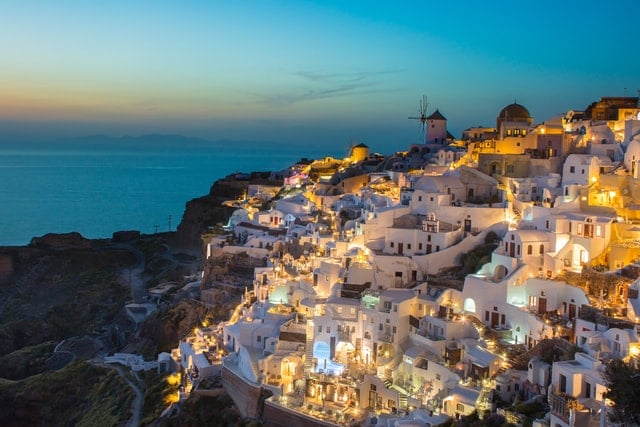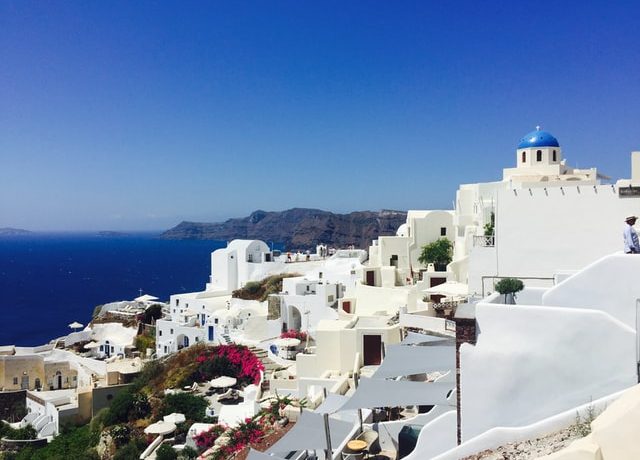The resort town of Agios Nikolaos, what awaits us there and what sights to see in this cozy Greek town. Picturesque Crete is considered the largest Greek island in terms of area – 8261.2 sq. km. 65 km east of its capital, the city of Heraklion, is Agios Nikolaos. This small town (the Greeks often call it Agios Nikolaos), which is home to over 12 thousand people, was founded in 1881 and named after the ancient church of the same name, built by the Byzantines in the IX century. St. Nicholas – this is the name of the patron saint of the city, the defender of the whole country and Greek sailors.
Now Agios Nikolaos is known as a popular seaside resort. Since the early 1980s, numerous foreign tourists have come here annually from May to October for a pleasant pastime and entertainment on the local pebble and sandy beaches. In addition, the city and its surroundings are rich in natural, historical and sacred objects that cause sincere interest among guests of the seaside resort.
- 1 Platia Eleftheriou Venizelou Area
- 2 Lake Voulismeni
- 3 Fisherman’s Crypt
- 4 Kitroplatia square
- 5 Agios Nikolaos Promenade
- 6 Church of St. Nicholas
- 7 Agios Charalambos Church
- 8 Archaeological Museum
- 9 Greenhouse Lassithi
- 10 Spinalonga Island
- 11 Monastery of Our Lady of Faneromeni
- 12 Kremaston Monastery
- 13 Cave of Zeus
- 14 Votania Pure Herbs of Crete Farm
- 15 Ферма Cretan Olive Oil Farm
- 16 Milatos Cave
- 17 Ruins of Lato
- 18 Kritsa Village
- 19 Santorini Island
- 20 Attractions Agios Nikolaos on map
Platia Eleftheriou Venizelou Area
Most foreign tourists begin their acquaintance with the city in the square of Eleftherios Venizelos. Platia Eleftheriou Venizelou – as the name sounds in Greek – bears the name of a prominent political figure in Greece. Uh. Venizelos served as prime minister of the country from 1910 to 1933 Now this small square has become a place where numerous guests of the city like to gather.
In the center of Platia Eleftheriou Venizelou stands a monument to the Heroes. The bronze monument, made in the form of a torch, is installed in honor of the warriors who fought for the independence of Crete in different historical eras. Around the square there are several establishments and status buildings that are interesting for tourists:
- Agia Triada – church, restored in 1980 in the Byzantine style;
- restaurants and cafes: Roza (Greek dishes), Havas (restaurant of local cuisine), Piazza (small café), Milo (takeaway);
- shops: Mati (sale of sunglasses), Oddys (fish supermarket), Pink Woman (women’s clothing).
There are also several banks, a taxi rank and a pharmacy. From the Square Of Eleftheria Venizelos begins the pedestrian street 28 October. There are many souvenir shops, cafes and shops. The street is named after an important historical event that occurred in 1940, when Greece refused to participate in the war on the side of Nazi Germany.
Address of the square: Pl. 5is Merarchias ke Akrita Ag. Nikolaos 721 00.
Lake Voulismeni
One of the most famous sights of Agios Nikolaos and all of Crete is Lake Voulismeni, located in the central part of the resort. In 1871, the construction of a canal connecting the natural reservoir with the sea was completed. Since then, the upper words of Lake Voulismeni have remained salty, and the lower ones are fresh. The emergence of a reservoir in this place has long been debated. Some experts are inclined to the volcanic origin of the lake. Most scholars claim that voulismeni is the mouth of a river flowing underground.
The lake is characterized by an almost perfectly round shape. The diameter of the reservoir is 137 m. In the central part, the lake has a depth of 64 m. The color of the reservoir even in sunny weather remains dark blue. Terracotta rocks approach the western shore of the lake. Among them you can see a small chapel and an observation deck.
On the eastern shore of the lake stretches a string of cozy taverns, cafes, bars and restaurants. Tourists most often look into several popular gastronomic establishments:
- The Lake;
- La Casa;
- Dionisos;
- Blue Lagoon;
- La Strada;
- Ano Kato;
- Skala Fusion.
Dozens of fishing boats are moored along the eastern shore of the Voulismeni. In the evenings, the lights turn on, and the lake is transformed, turning into a mysterious and mystical pond. At this time, it is easy to believe the myths that tell about Aphrodite and Athena – Greek goddesses who bathed in this reservoir.
On four sides, Voulismeni is surrounded by streets: Omirou, Poleologou, Dionisiou Solomou and Nik. Plastira
Fisherman’s Crypt
On the shore of Lake Voulismeni among the rocks “hides” a small sacred structure – the Fisherman’s Church, which is often called the crypt. Very little reliable information has been collected about this monument. Scientists suggest that there was a larger temple on the site of the church. Only one icon remains of it, which is stored in the inner hall.
The white facade of the stone building stands out among the rocks of brown and dark red color. Inside the church in the hall, which has a length of 24 m, there are exhibits of the Museum of Ancient Sailing Ships:
- anchors;
- propellers;
- ropes;
- Networks
- documents;
- tools;
- devices used for navigation at sea.
In the evenings, the building of the Fisherman’s Crypt is illuminated. You can visit the museum in any month from 12:00 to midnight. Entrance to the hall is free.
Address: Nik Plastira 18–22 Ag. Nikolaos 712 00.
Website: https://www.allincrete.com/fishermans-crypt/
Kitroplatia square
285 m to the south-west of Lake Voulismeni is a small area – Kitroplatia square. The name can be translated as “Citrus”. For guests of the resort, this word sounds unexpected. The name of the square, along which the pebble-sand beach of the same name stretches, is easy to explain.
In the past, the citrus fruit trade was developed in Agios Nikolaos. They were brought on small ships to the shore. In this place for many years there was a large market where citrus fruits were sold. Now Citrus Square is a center of entertainment and recreation, where dozens of hotels, taverns, restaurants and bars are located.
Address of the square: Agios Nikolaos 721 00, Akti Papa Nikolau Pagalou street.
Agios Nikolaos Promenade
Among the attractions of the resort, a special place is occupied by the embankment. It is here that you can see numerous groups of foreign tourists enjoying evening walks in the warm summer. The promenade of Agios Nikolaos is a zigzag well-groomed street that stretches for about 2.1 km.
One of the most interesting objects located here is the “Abduction of Europa” – a sculptural composition that reproduces the famous myth. The author of the monument is Nikos Kondourovos. Tourists are happy to be photographed next to Zeus in the image of a bull, on which Europe sits with the “rod of reconciliation”.
Another sculptural composition is an unusual monument made of metal and glass. The monument is an obelisk, the shape of which resembles the fin of a shark. “The Horn of Plenty” is the name of the sculptural composition made by the Sotiriadis brothers. The authors embodied in their work the plot of the myth of the goat that fed Zeus when the future God was hiding from his father, who tried to kill him.
The promenade of the resort is rich in restaurants, shops, taverns and bars. Tourists most often get acquainted with the taste of national dishes in gastronomic establishments, which have proven themselves best:
- Aquarius;
- Maistrali;
- Mare & Monte;
- Bajamar;
- Paradosiako;
- Saray;
- Cindys;
- Déjà Vu.
Address: Agios Nikolaos 721 00. Most of the promenade stretches along Akti Koundourou Street.
Church of St. Nicholas
About 1.4 km north of Lake Voulismeni is the temple after which the city is named. The Church of St. Nicholas was erected by the Byzantines in the IX century. Some historians claim that the temple was founded much earlier, in the VIII century. In 1303, the sacred structure suffered from an earthquake. After that, the walls of the church were re-painted with frescoes depicting saints.
The single-nave basilica is located on a small peninsula surrounded by coniferous trees. Now this territory belongs to “Minos Palace” – a five-star hotel. The building of the Church of St. Nicholas is built of stones of different sizes. The gable roof is covered with typical Crete tiles. The small dome has the shape of a cone.
The belfry of the temple with a bell is decorated with a cross. In the inner hall of the church, some of the antique icons and frescoes have been preserved. The attention of visitors is attracted by the image of St. Mary, who feeds her child. The fresco was painted in the XIV century. The oldest icons belong to the XIII century. Getting inside the church is not easy. The doors of the temple are opened by local residents. Services are not held in the church.
Address of the Church of St. Nicholas: Agis Nikolaos 721 00.
Agios Charalambos Church
Only 438 m separate Agios Charalambos from Lake Voulismeni. The reservoir is located to the east of the Catholic church, built recently on a high hill. People come here not only for divine services, but also for the sake of beautiful views of the picturesque resort and the sea sparkling in the sun.
The temple, located on the territory of a pine grove, is named after St. Charlampius. The beige building of the church is decorated with a large dome crowned with a cross. The high belfry gives the sacred structure a solemn look. You can come here any day. Catholic Masses begin at exactly 5 p.m. and are held on public holidays and Sundays.
The address of the church of Agios Charalambos: Agios Nikolaos 721 00. Around the church stretches Mesolongiou Street.
Archaeological Museum
Not far from the embankment is the building of the Archaeological Museum, which first opened its doors to visitors in 1970, now more than 6 thousand exhibits are presented in 8 halls of the institution. The museum’s artifacts span a long period, from the Neolithic to the Greco-Roman era. Among the numerous exhibits, several of the most interesting items stand out:
- bust of the goddess Isis;
- ancient tombs and sarcophagi;
- the head of a clay statue, presumably made in 700–550 BC;
- Minoan men and women figures;
- items related to the Goddess Myrtos;
- the skull of a Roman athlete who lived in the first century; a distinctive feature of the find is a laurel wreath of precious metals, which adorned the head of an ancient athlete;
- a collection of coins dating back to 350–330 BC;
- ancient pixids are small boxes used to store jewelry.
Connoisseurs can long list the most valuable exhibits of the Archaeological Museum. The institution accepts visitors from Tuesday to Sunday from 8:00 to 15:00. In the summer months, the museum closes at 16:00. The entrance fee is 4 euros. Children under 16 pay 1 euro less.
Museum address: Konstantinou Paleologu, 74, Ag. Nikolaos, 721 00.
Website: http://odysseus.culture.gr/h/1/eh155.jsp?obj_id=3523
Greenhouse Lassithi
Connoisseurs of Crete are well aware of the word “Lassithi”. This is the name of the Greek noma (district) in which Agios Nikolaos is located. However, not all tourists know the Lassithi Greenhouse, located on the sea coast of the resort. This small arboretum, rich in subtropical plants, is worth a visit not only for connoisseurs of the Cretan flora.
Every curious tourist will benefit from the variety of southern trees and shrubs presented in the natural greenhouse. The best time to visit this place is summer, early autumn and the second half of spring. Entrance to the greenhouse is free.
Address: Xirokampos Junction, Ag. Nikolaos 721 00, Greece
Attractions in the vicinity of the resort
Most foreign tourists are usually not limited to acquaintance with the historical, cultural and natural sites of Agios Nikolaos. Many places of interest to curious travelers are located in the picturesque surroundings of the resort.
Spinalonga Island
About 11.5 km north of Agios Nikolaos is one of the most historically important islands in the crete archipelago. The total area of Spinalong is 35 hectares. The distance to Plaka – the nearest village to the island, located on the sea coast – is 839 m. The history of Spinalong is rich in a variety of events:
- – 1526 – The Venetians destroyed the isthmus and separated Spinalonga from the peninsula of the same name;
- 1586 – the construction of a powerful fortress on the island was completed; the fortification protected the port from enemy ships;
- – 1669 – Ottoman Turks capture Crete however, Spinalonga remained unconquered;
- – 1715 – Venetians leave the island; the ottomans became the masters of Spinalong;
- 1903 – the Greeks built a leper colony on the island for leprosy patients; the Ottoman Turks gradually left Spinalonga;
- 1957 – The leprosy was closed.
In 1970, excavations began on Spinalonga. Now the island is one of the most popular attractions of Crete, where thousands of foreign tourists strive to get every year. Travelers get to Spinalong from Plaka or Elounda , the nearest resort. Boats run from both places several times a day. The cost of the trip is from 8 to 16 euros.
The best time to visit the island is in the morning hours in the summer or in September and October. Entrance to Spinalonga – 2 euros. From the pier to the fortress and the ruins of the ancient village there is a tunnel, the walls of which are covered with mirrors. The author of the project is Kostas Tsoklis, a talented Greek artist. On the territory of the island, tourists get acquainted with several historical and cultural sites:
- fortress walls;
- the remains of ancient status buildings and houses of local residents;
- two restored churches: St. George and St. Panteleimon.
From Agios Nikolaos to Plaka and Elounda there are regular buses.
Monastery of Our Lady of Faneromeni
About 26 km southeast of Agios Nikolaos are the possessions of the monastery of Our Lady of Faneromeni. Some archaeologists of Greece claim that a sacred structure existed here in the XIII century. However, most experts call the XV century the time of the foundation of the monastery complex.
Most of the buildings on the territory of the monastery belong to the XV and XVI centuries. The monastery complex is located on a hill, the height of which is 540 m. From here you can look at mirabelon Bay for a long time and ships plying the sea. The main shrine of the monastery is the icon of the Theotokos Revealed.
Every year on August 15 – the day of the Assumption of the Virgin – crowds of pilgrims flock to the walls of the existing monastery. For many ordinary visitors, the monastery resembles a medieval fortress. Entrance to the monastery complex is open daily from 9:00 to 12:00 and from 16:00 to 19:00. From Agios Nikolaos you can get here by taxi (the cost of the trip is from 35 euros) or as part of an excursion.
The address of the monastery is Moni Faneromenis, Ierapetra, Lasithi 72200.
Kremaston Monastery
Crete is rich in sacred places that arouse the sincere interest of foreign tourists. 13 km northwest of Agios Nikolaos on the slopes of a low cliff are the “possessions” of Cremaston , an active convent. The monastery, located among pines and cypresses at an altitude of 397 m, was founded by Hieromonk M. Agapithos in 1593.
The monastery is dedicated to two archangels: Gabriel and Michael. Initially, it was a men’s monastery, built in the form of a medieval fortress. In 1622, the construction of the temple was completed on the territory of the monastery. In 1821, the doors of the school opened. In 1866, the Turks seized the monastery and almost destroyed it. The monks hid icons, sacred relics and books in a cave located near Cremaston.
The restoration of the monastery buildings was completed only in 1992, since 1993 the monastery has existed as a women’s monastery. Since then, services have been held here regularly. The nuns are also engaged in economic affairs. The doors of the ancient sacred complex are open for everyone who wants to visit this place.
Visitors to the monastery of Kremaston get to the monastery from Agios Nikolaos by road going to Napoli – a small town. From there they turn towards Vryseses, a Cretan village. Next, you have to overcome the distance of 2.5 km according to the signs leading to the monastery.
Address of the monastery: Kremasto Monasteri, Neapoli, 724 00
Cave of Zeus
Small in size, Crete is rich in places associated with ancient Greek legends and myths. One of them is the Dicteus Cave, located on the famous Lassithi Plateau. Active excavations were carried out in this area in 1886 and 1896, their organizers were Joseph Hadzikalis – a Greek scientist – and Arthur Evans – a British archaeologist and historian.
As a result of the excavations, it was possible to find many figurines and other artifacts associated with the cult of Zeus – the ancient Greek God of lightning and thunder. The myth tells how Rheia – the mother of the Olympian gods – hid in caves from Kronos , her husband, who devoured children. In the Cave of Dicteus, she gave birth to Zeus. Since then, the people call the sacred place by the name of this god.
The entrance to the cave of Zeus is located at a considerable height – 1024 m. At the foot of the mountain there is a spacious car park. From there, along a steep slope to the entrance to the cave, there is a winding path, the length of which is slightly more than 800 m. Tourists most often come here with excursions. Lovers of independent trips get by car from Agios Nikolaos on two routes:
- by road (route length – 49 km) through Ano-Amigdali, Zenia, Massa Potami, Agios Constantine and Agios Georgios;
- by road (distance 53 km) via Napoli, Vrahasi, Krasion, Moni-Vidianis, Plati and Psychorn.
Inside the cave of Zeus are equipped with strong stairs and bridges over the underground lake. The lobby and the large hall are illuminated by artificial light. Visiting the cave is paid. The entrance fee is 6 euros. Students and children explore the cave of Zeus for free. In summer (from May to the end of October) access is open from 8:00 to 20:00. In other months – from 8 am to 3 pm.
Address: Psychro Cave 720 52, Greece
Votania Pure Herbs of Crete Farm
Very close to the village of Kavousi is “Votania” – the farm of organic herbs of Crete. Votania was founded quite recently, in 2010, the main goal that the farm staff set in their activities is the preservation and protection of the island’s biodiversity. Many Cretan herbs are grown here:
- rosemary;
- sage;
- dictamos;
- chamomile;
- echinacea;
- malotir;
- thyme and many others.
The farm can be visited as part of a guided tour, who will tell in detail about the history of Votania, production technology and the healing properties of the herbs grown here. The cost of the event for one participant is 10 euros. The farm produces a number of different products that can be purchased in the store:
- essential oils;
- herbal teas;
- essences;
- spices;
- olive oil soap using herbs;
- therapeutic ointments;
- olive oil based on farmed herbs.
The distance between Votania Pure Herbs of Crete and Agios Nikolaos is 30.5 km. Motorists drive on the E75 road. The farm is located west of Agios Nikolaos on the coast of Mirabelon, a picturesque bay.
Farm address: Tholos Beach, Village of Kavousi, East Greece 722 00.
Website: http://www.votania.com/
Ферма Cretan Olive Oil Farm
In the immediate vicinity of Agios Nikolaos are the “possessions” of the Cretan Olive Farm, founded in 1882 The reconstruction of the enterprise, which occupies an area of 4 thousand square meters, was successfully carried out in 2014, now more than 60 varieties of olive trees are grown here.
The farm is located north of Agios Nikolaos on the 2nd kilometer of the Agios-Nikolaos-Eloundo highway. For those who want to visit Cretan Olive Oil Farm, several opportunities are offered:
| measure | duration | cost (in euros) | It’s time | days |
| guided tour | 60 min. | | 5 and 3 | 10:00–18:00 | daily, excluding Sundays |
| familiarity with the process of making olive oil | 90 min. | | 40 and 25 | 10:30 | Monday and Wednesday |
| cooking lessons | 3 h 30 min | 48 and 35 | 11:30 | Monday and Wednesday |
| cheese production | 60 min. | | 28 and 18 | 10:30 | Tuesday, Thursday and Saturday |
| master class on the manufacture of pottery | 60 min. | | 25 | 10:00–18:00 | daily except Sunday |
| large excursion including master classes | 3 hours | 45 and 28 | 10:00–13:00 | Tuesday, Thursday and Saturday |
The table shows the cost, relevant for 2021, the first number is the price for an adult visitor. The second is for children from 6 to 12 years old. Young guests of the farm, who are under 6 years old, attend all events for free.
Farm address: 2nd km Agios Nikolaos–Eloundo, 721 00, Lasithi.
Website: https://www.cretanoliveoilfarm.com/
Milatos Cave
Many dramatic events took place on the Cretan land. One of them is connected with the cave of Milatos, located 25 km northwest of Agios Nikolaos. In February 1823, Hasan Pasha, the Turkish governor, with his troops devastated and destroyed the settlements of the Greeks on the Lassithi plateau.
Locals hid from him in caves. One of them was near the village of Milatos. The Cretans call this cave Rapas. Hassan Pasha sent Hussein, his lieutenant, to her. The army besieged the cave for a long time. One day, Hussein ordered bonfires to be lit. With the help of smoke, he wanted to force peaceful Greeks and warriors to leave the cave.
The lieutenant’s plan was successful. During this tragic event, more than 150 Greek soldiers and more than 2,000 civilians died. However, the Turks never managed to conquer Crete. Hasan Pasha crashed, falling from his horse, which stumbled during a fast run. In order for descendants to remember the dramatic event that occurred in the cave, an altar and a chapel were built in 1935. They can now be seen during a visit to the cave.
Tourists reach this natural site from Agios Nikolaos by road to Naples. When you reach Nispitas, turn towards the village of Milatos. Eight entrances of different sizes lead to the cave. Its dimensions are small: width – up to 45 m, length – 75 m. Tourists pass inside the cave, located at an altitude of 150 m, through the main entrance. Visiting this natural object is free of charge.
Cave address: Milatos Cave, Vrachasi, Lassithi. The best time to visit the cave is summer, spring and autumn.
Ruins of Lato
About 15 km southwest of Agios Nikolaos is a unique historical site – Lato. This name of the ancient Dorian city-state is well known to connoisseurs and history buffs. Trade developed here, its own coins were minted, and there was a turbulent social life. The city-state reached its heyday in the V century BC. e. In 200 BC. e. The lato was destroyed.
Excavations in the place where the Dorian city-state was located were carried out by archaeologists of France in the 1900s. The remains of several ancient buildings appear before modern visitors:
- temple;
- amphitheater;
- artisan workshops;
- agora;
- residential buildings;
- stone stairs;
- Sanctuary.
Access to Lato balances is open daily from 8:00 to 15:00. The entrance fee is 2 euros. For children – 1 euro. Most tourists reach the ruins of the city-state from Agios Nikolaos by road going through Mardathion to the village of Kritsa. From it to Lato it is necessary to overcome a distance of 3 km.
Address of The Ruins of Lato: Agios Nikolaos Municipality 721 00, Greece
The remains of the ancient city are located at an altitude of 38 m.
Kritsa Village
12.5 km west of Agios Nikolaos, an ancient village “hides” among the olive groves. In Kritsa – the so-called historical place – thousands of curious tourists go every year. From Agios Nikolaos to the village leads a mountain road winding serpentine. Travelers drive past herds of sheep and an olive grove.
The narrow streets do not allow you to move around the village by car, so tourists usually leave cars at the entrance to Krita. Guests are very interested in getting acquainted with local attractions:
- shops;
- souvenir shops;
- taverns, where you can get acquainted with the taste of Cretan dishes;
- “Rodanti” – a small museum, where rare and endemic plants of Crete are presented; the cultural institution receives guests daily from 9 am to 5 pm;
- Panagia Kerra – a Byzantine church erected in the XIII century; a small temple turned into a museum; the doors of the establishment are open from 9:00 to 15:00; the cost of visiting is 2 euros.
The village is located on Kastella, a hill whose height is 375 m. Now about 1.3 thousand people live in Kritsa.
Village address: Kritsa 720 51. From Agios Nikolaos, motorists travel along the Agiou-Nikolaou–Prinas district road.
Santorini Island
Tourists vacationing in Crete and directly in Agios Nikolaos are not limited to exploring the island and the resort. There are many interesting places around. One of the most sought-after destinations is the island of Santorini, located in the Aegean Sea, 130 km north of Agios Nikolaos.
The length of the coastline is 66 km. The area of the island is 76.19 square kilometers, which is about 108 times less than the territory of Crete. Santorini is of volcanic origin. The eruption, which changed the shape of the island, occurred between 1650 and 1500 BC. e. Over the long history of Santorini, they were inhabited by a variety of peoples: Dorians, Phoenicians, Ottoman Turks, Greeks, Romans, Byzantines. Since 1830, the island finally became Greek.
Ferries arrive from a wide variety of cities in Greece to the port of Athinios. From there, tourists climb on foot, overcoming 588 steps of a steep staircase, or go by cable car to the hill where Thira is located – the capital of a picturesque island. In this small town, travelers are attracted by many historical and cultural sites:
- Theotokopoulu Square, where there are several souvenir shops, cafes, shops and taverns; from here there are excursions around the island;
- Dominican Monastery;
- The Cathedral of the Presentation of the Lord;
- Archaeological Museum;
- St. Min’s Church;
- white apartment buildings decorated with blue shutters.
Not far from Tyra is Skaros – a medieval fortress built by the Venetians in the XIII century. Another place that is definitely worth a visit on the island is Oia. This compact city, the first mention of which was recorded in 1650, will surprise with a variety of interesting sights:
- white miniature houses;
- small churches;
- old mills;
- St. Sosont’s Church, founded in 1650
Santorini is rich in clean well-groomed beaches. Due to its volcanic origin, the sand on the coast is black. The island is best reached by ferry from Heraklion. The duration of the trip is from 1 to 4.5 h. The cost of the trip is from 65 euros.
Island website: https://www.greeka.com/cyclades/santorini/
Agios Nikolaos – a picturesque resort interesting for lovers of Greek history and nature
Tourists vacationing in Crete should definitely visit Agios Nikolaos. This ancient city and picturesque resort will help curious travelers to learn more about Cretan and Greek history and appreciate the beauty of the local nature. Agios Nikolaos is easily accessible from Heraklion. Buses from the capital of the island depart from two points – from the city airport and the bus station located next to the harbor. Travel time is about 90 min. Motorists go on the road 90/E75.
Agios Nikolaos City website: https://www.agiosnikolaoscrete.com/

